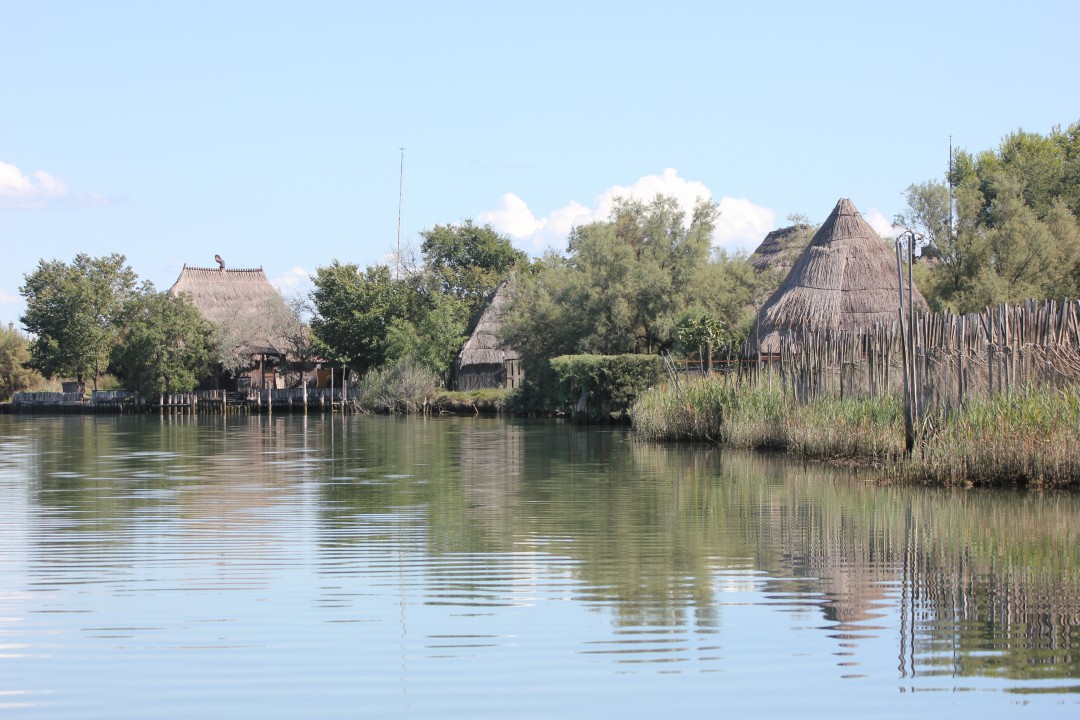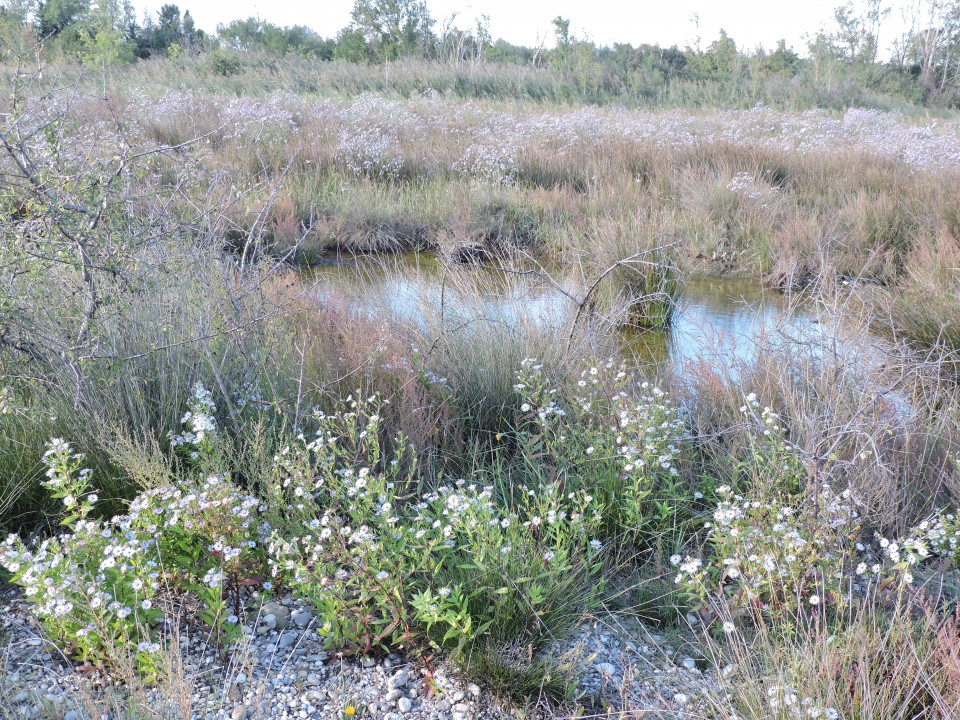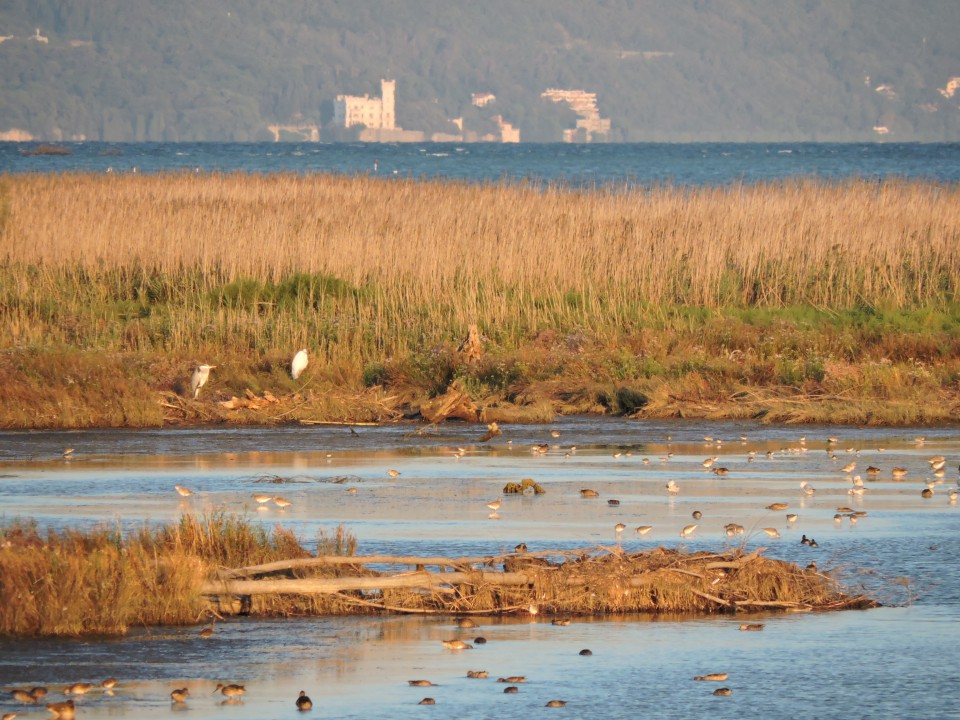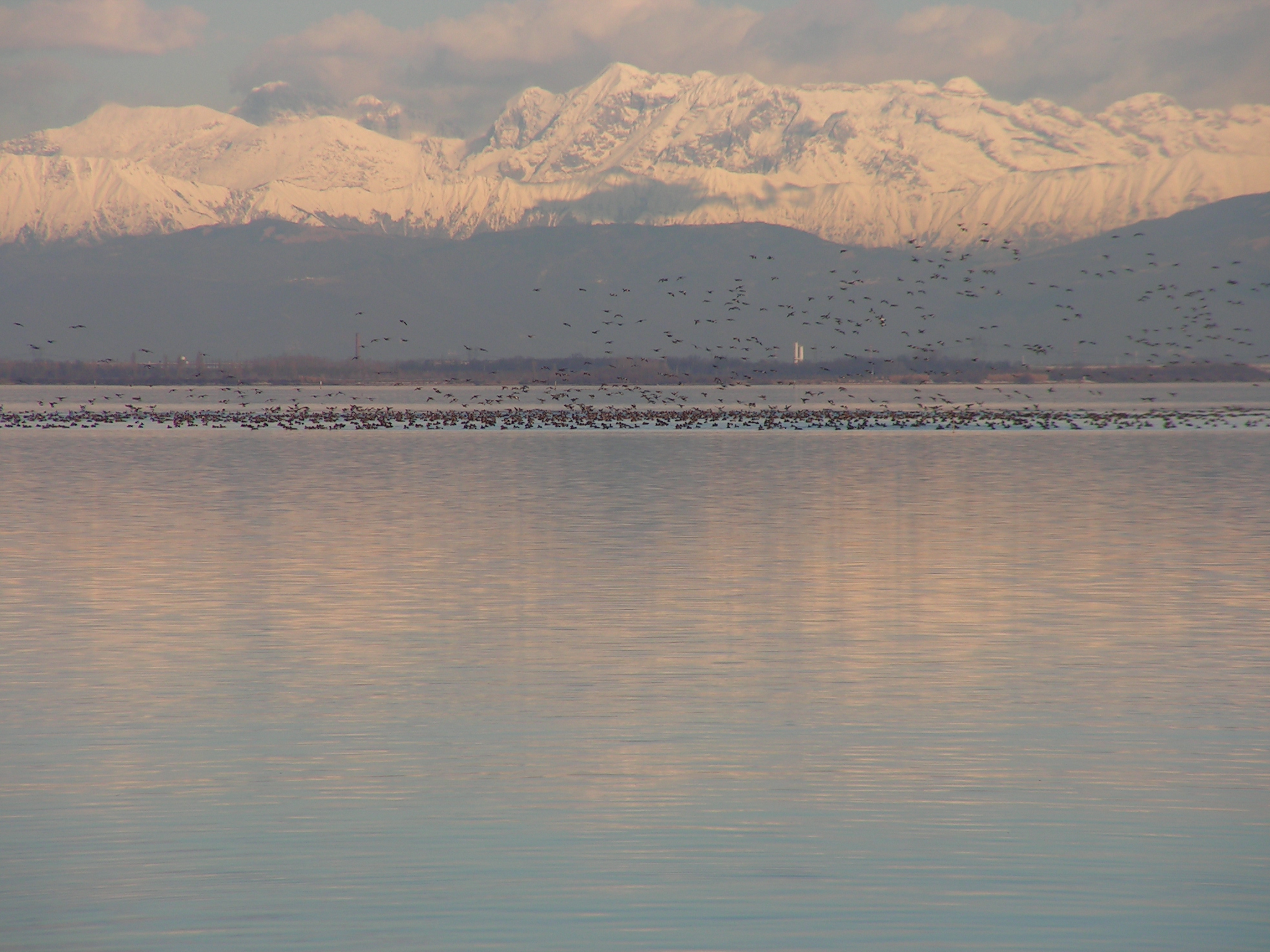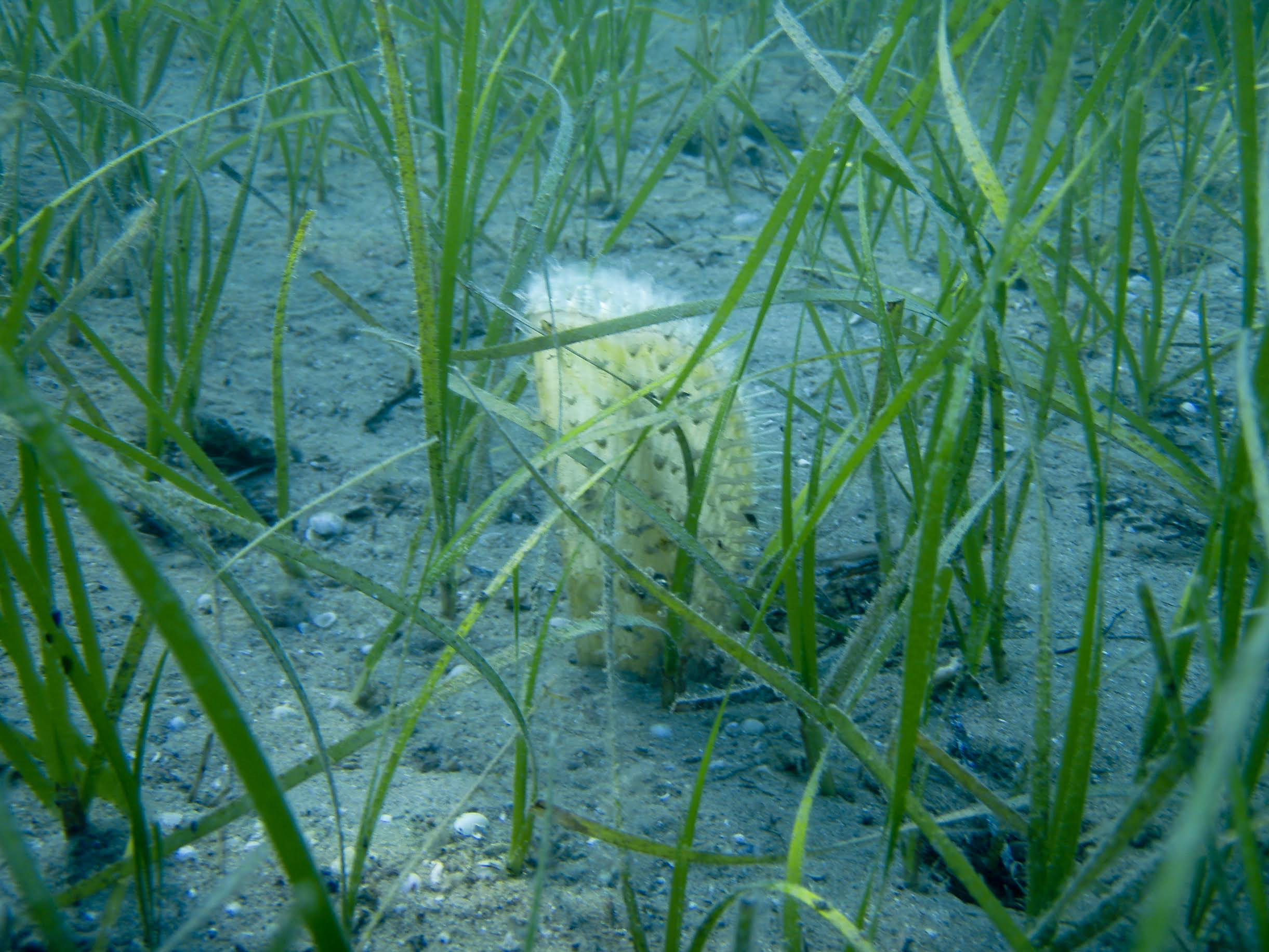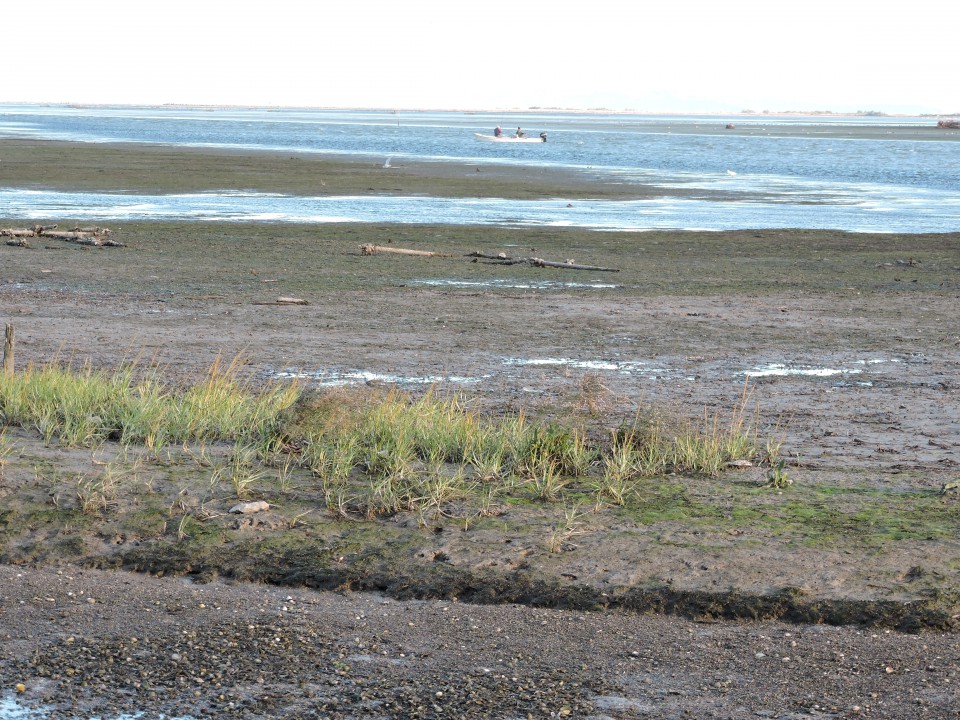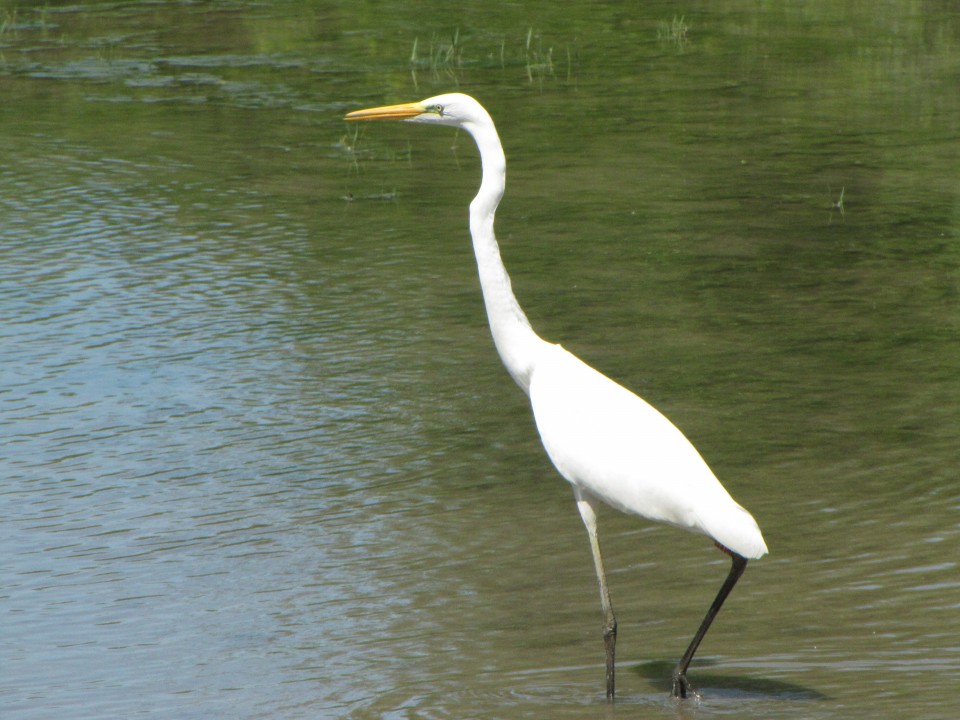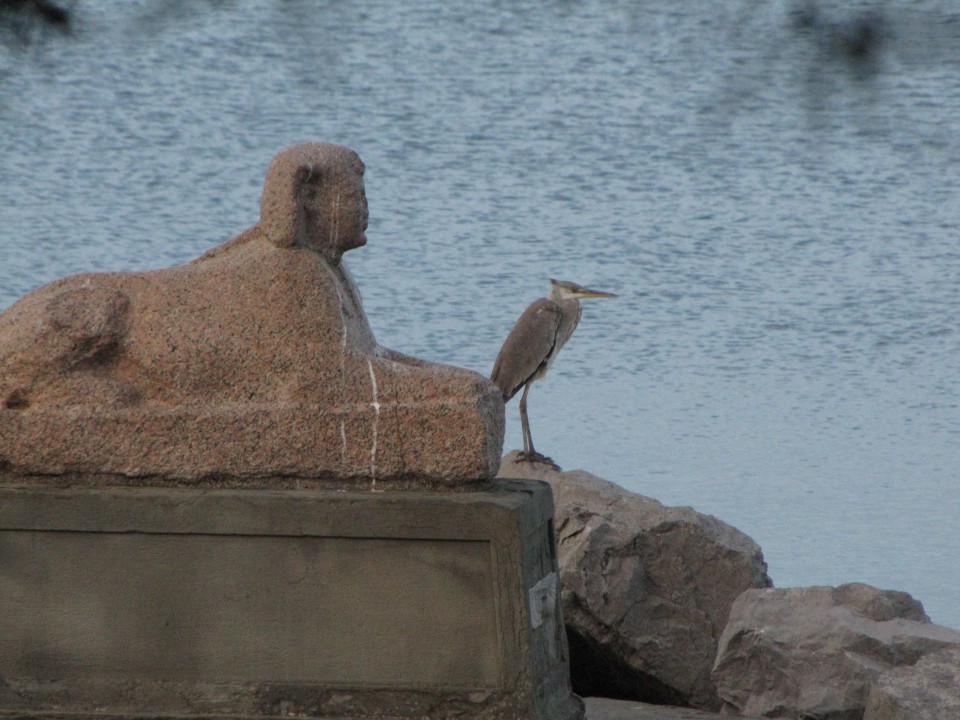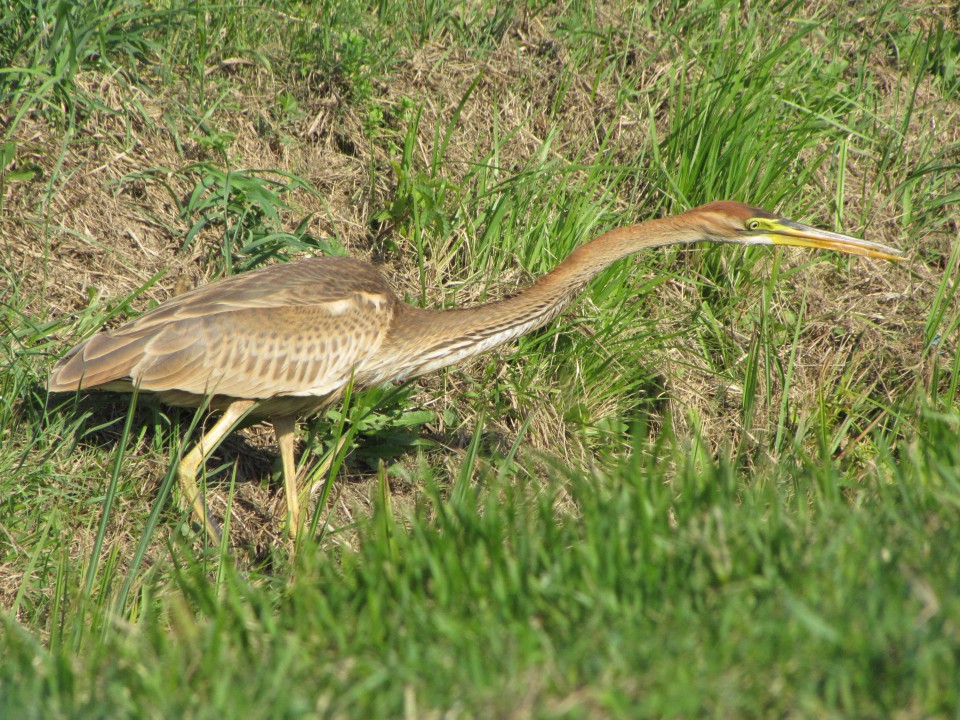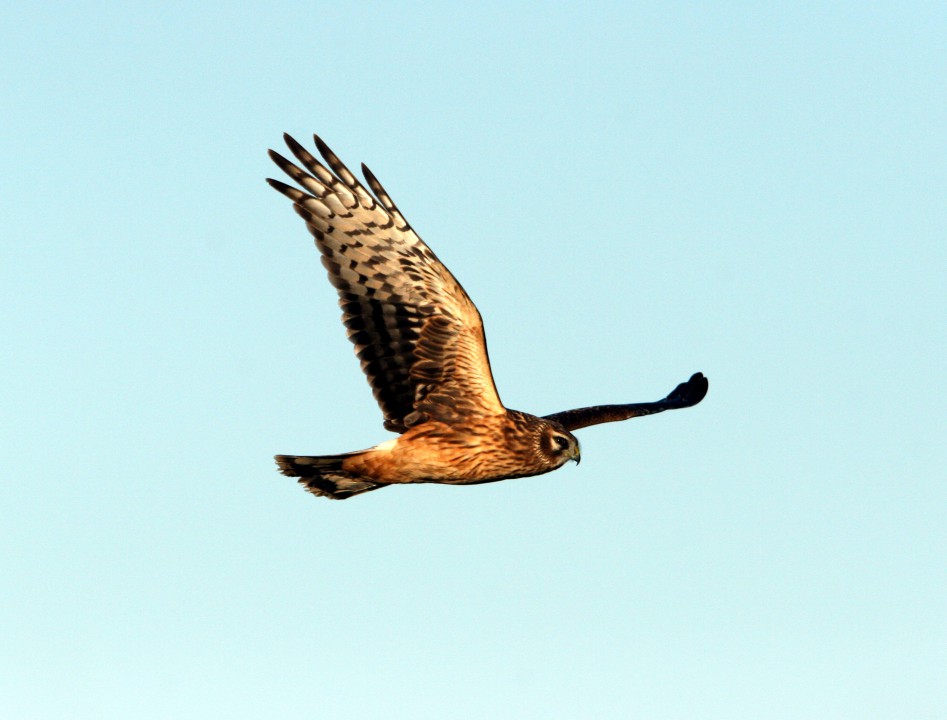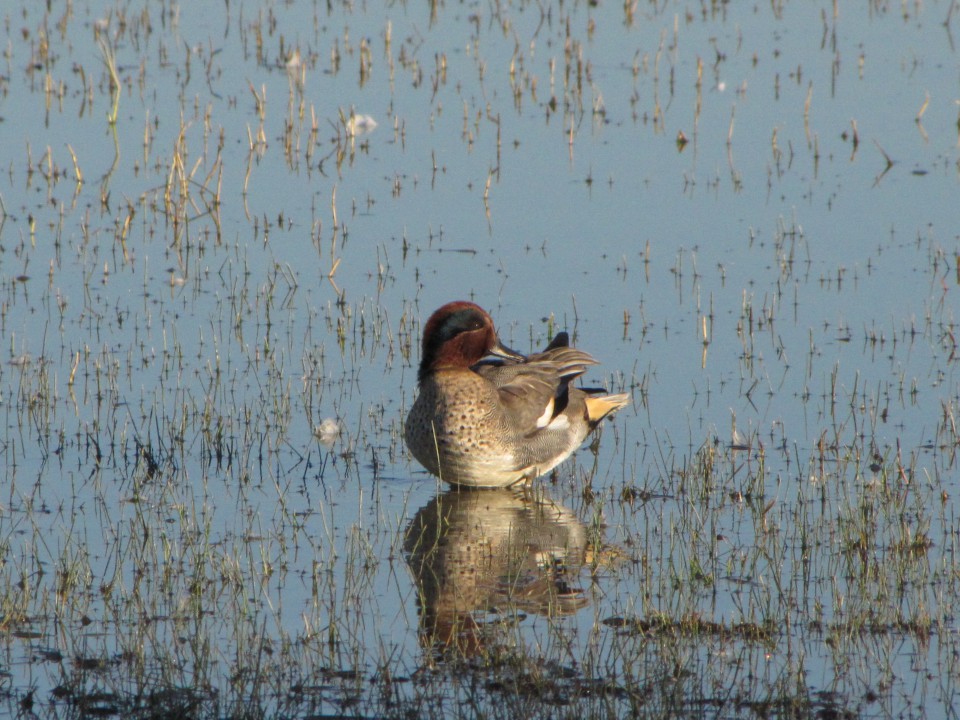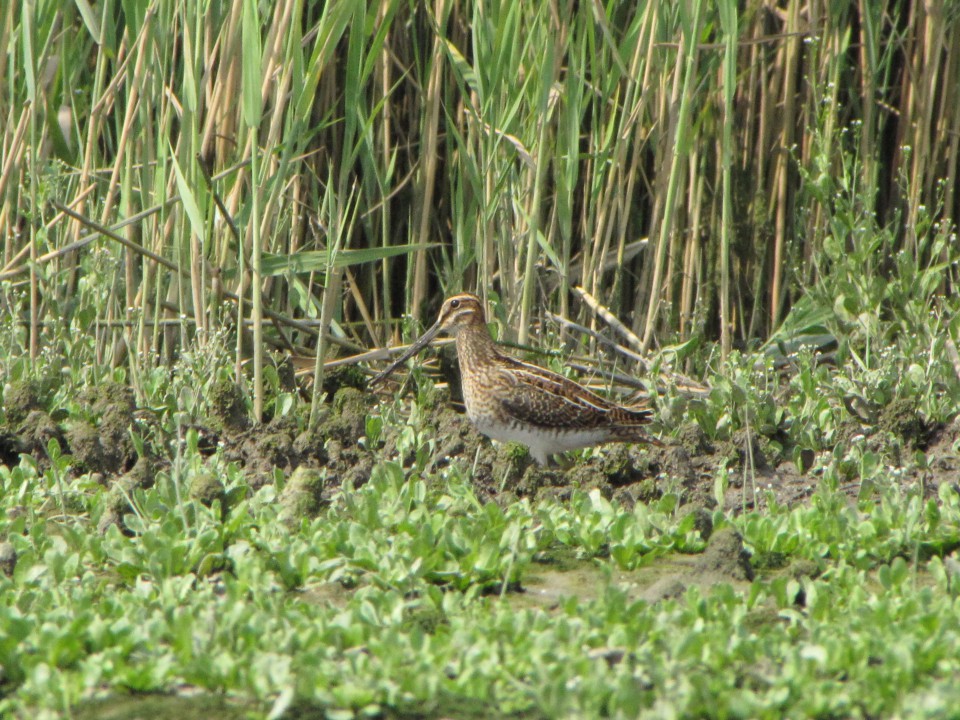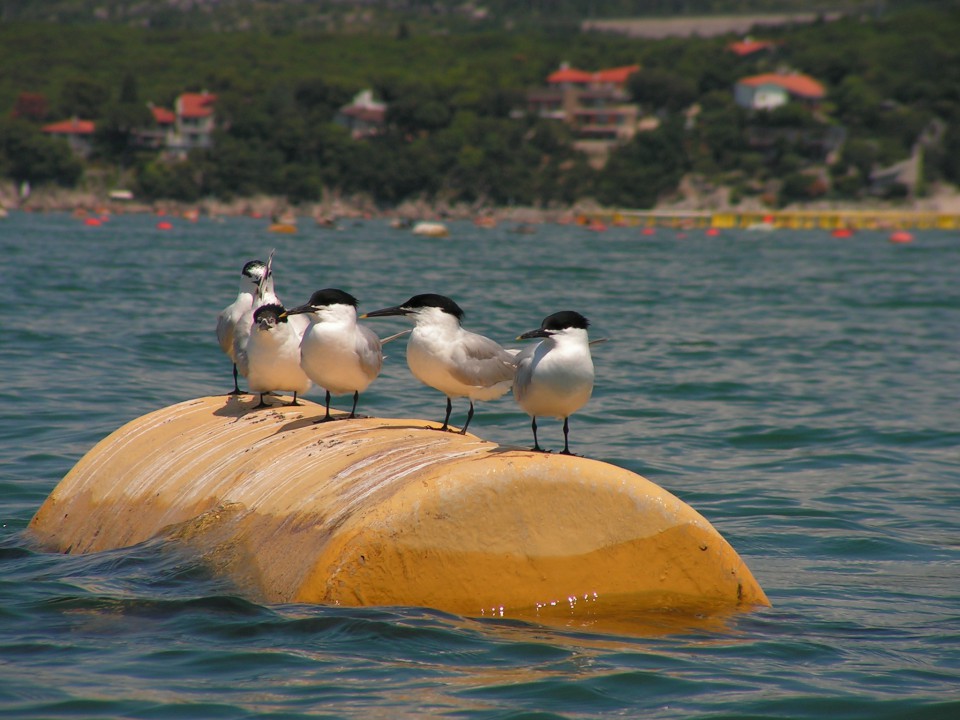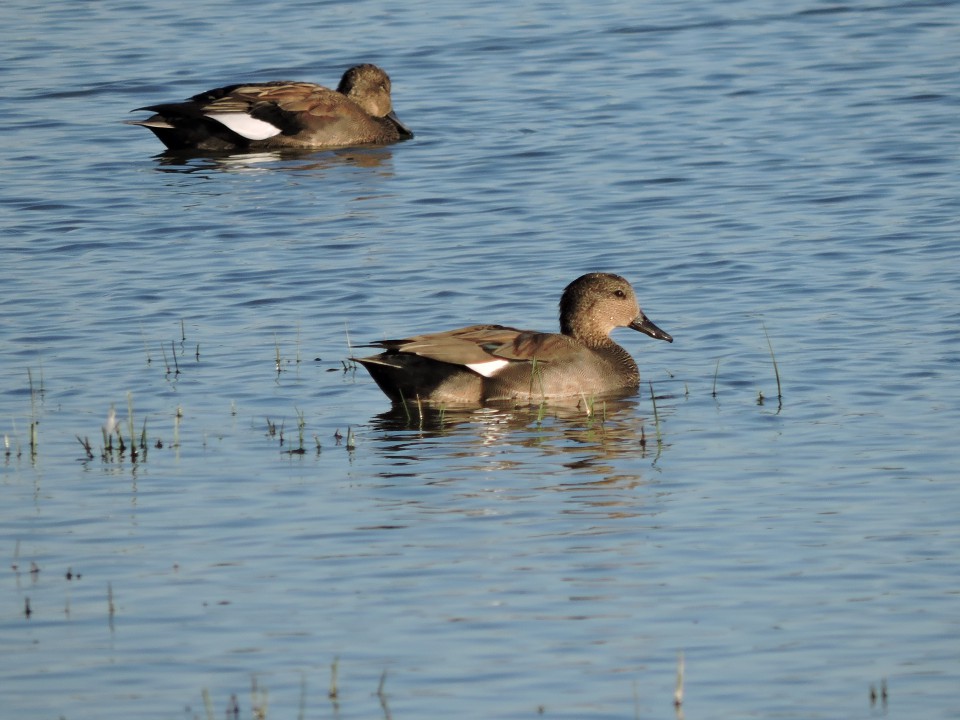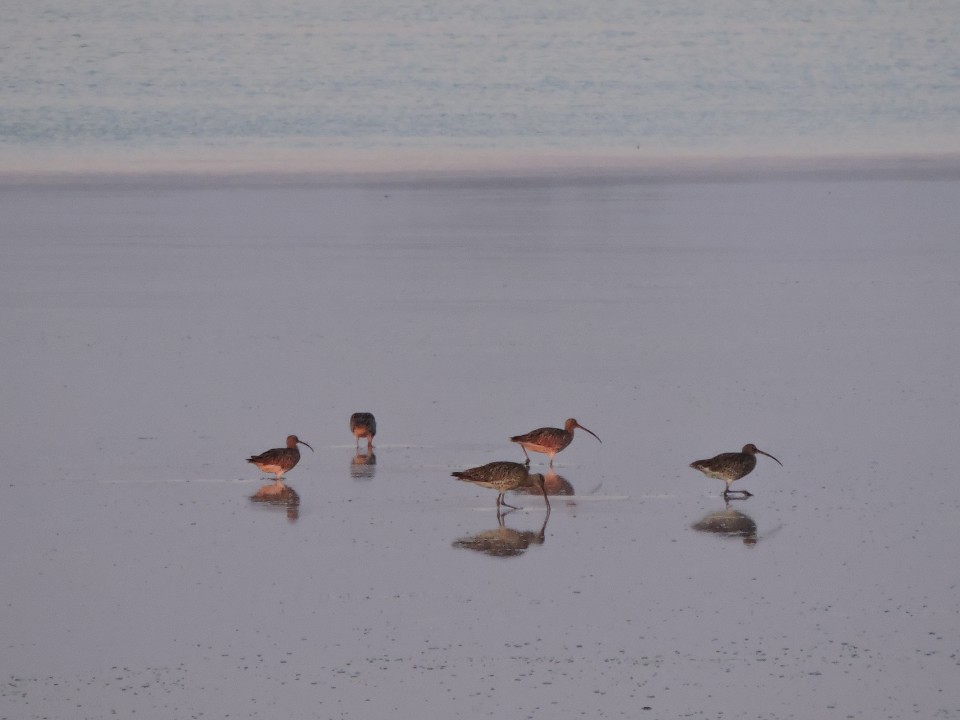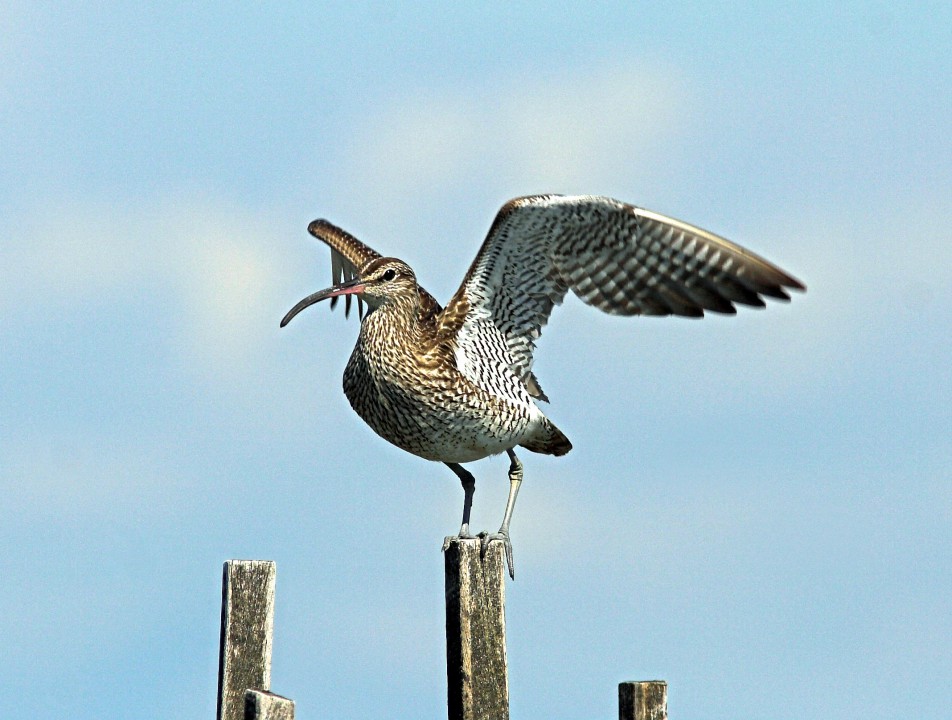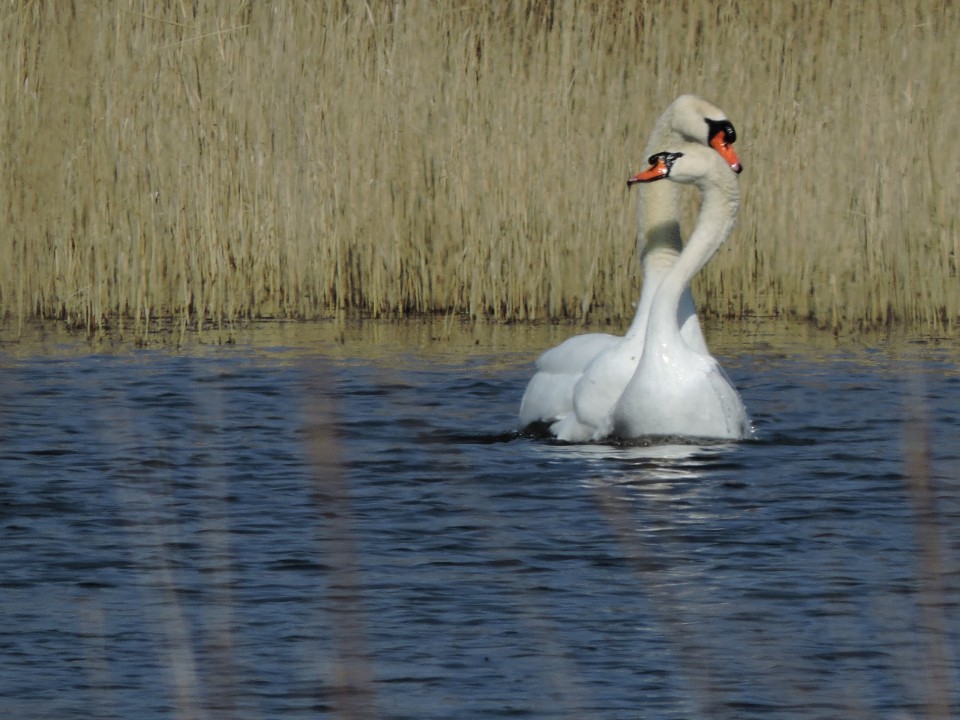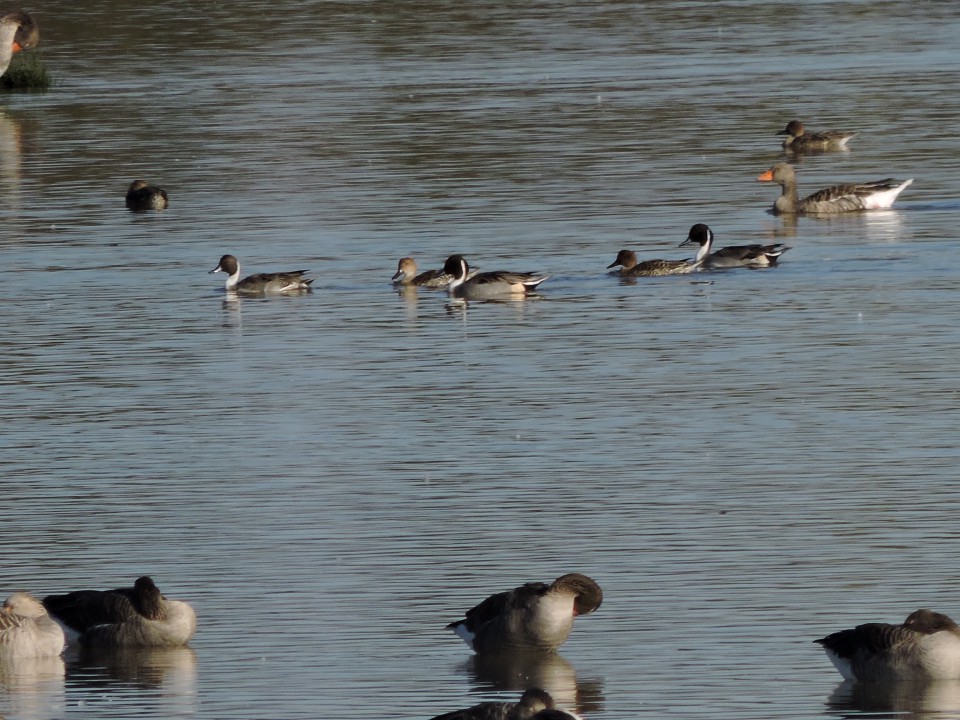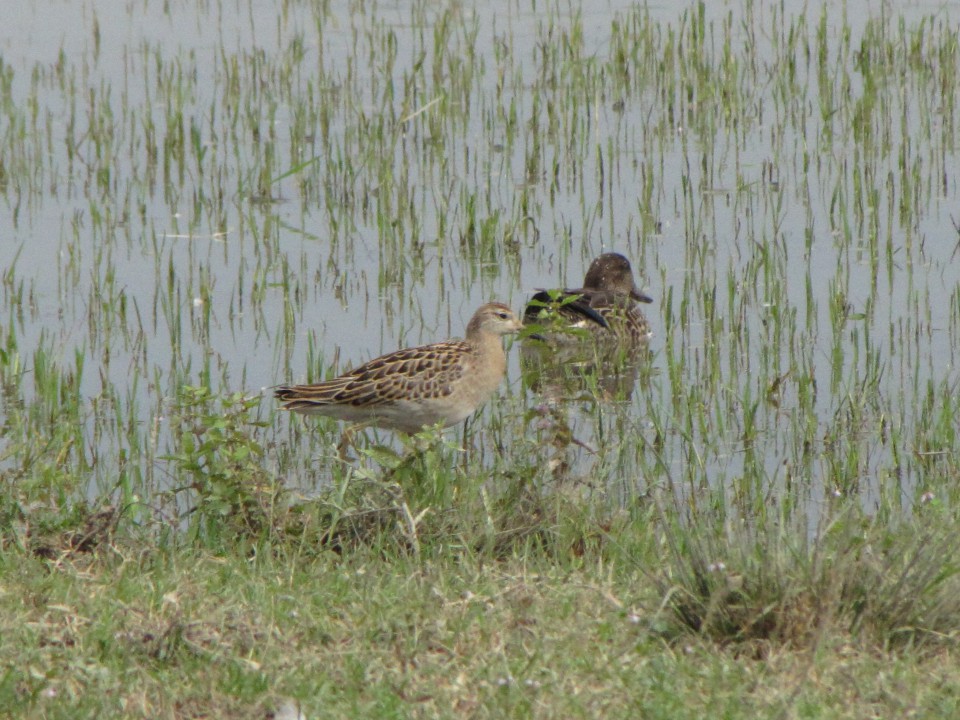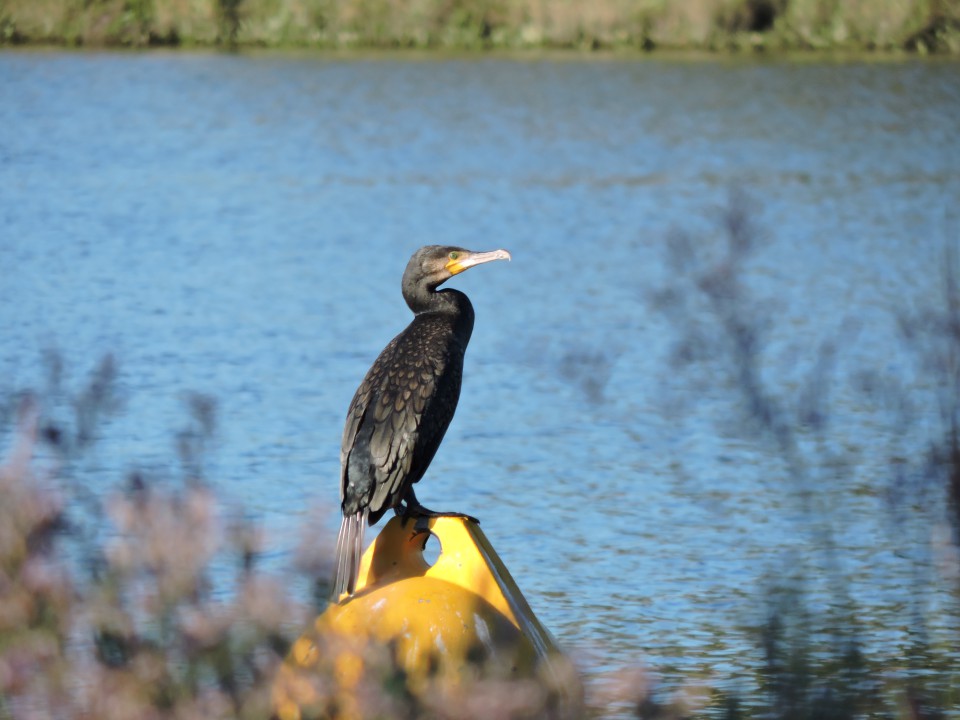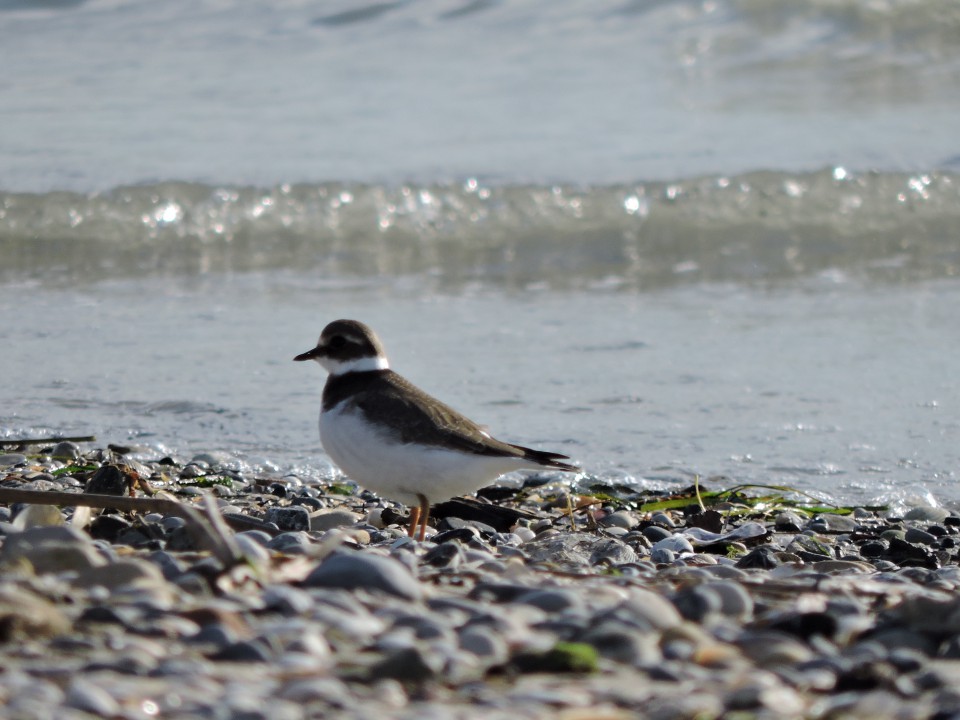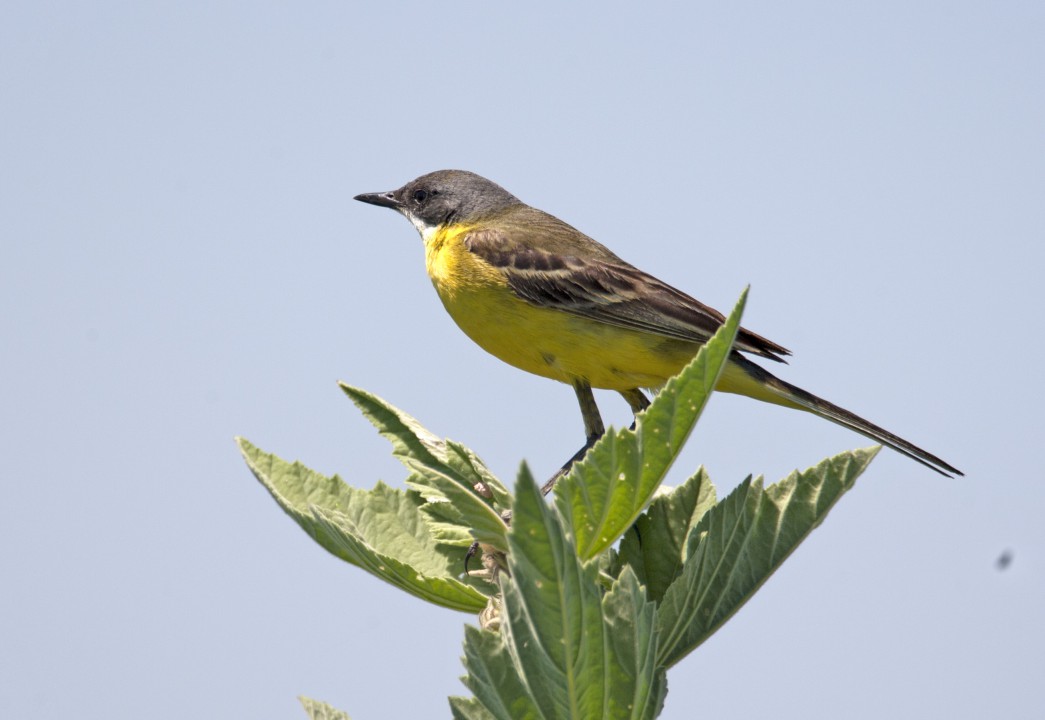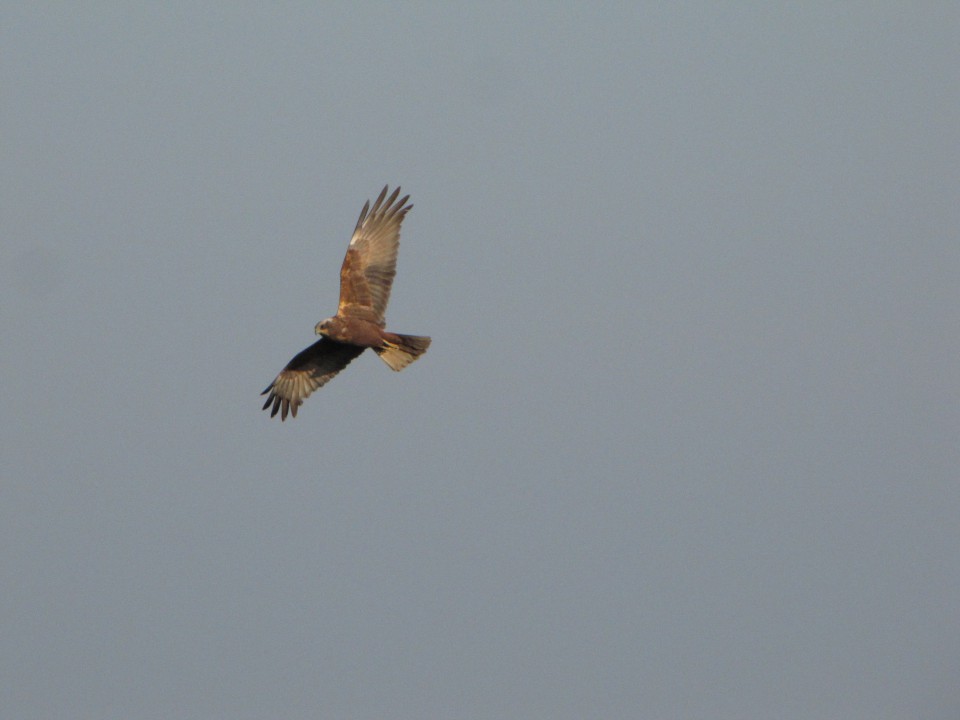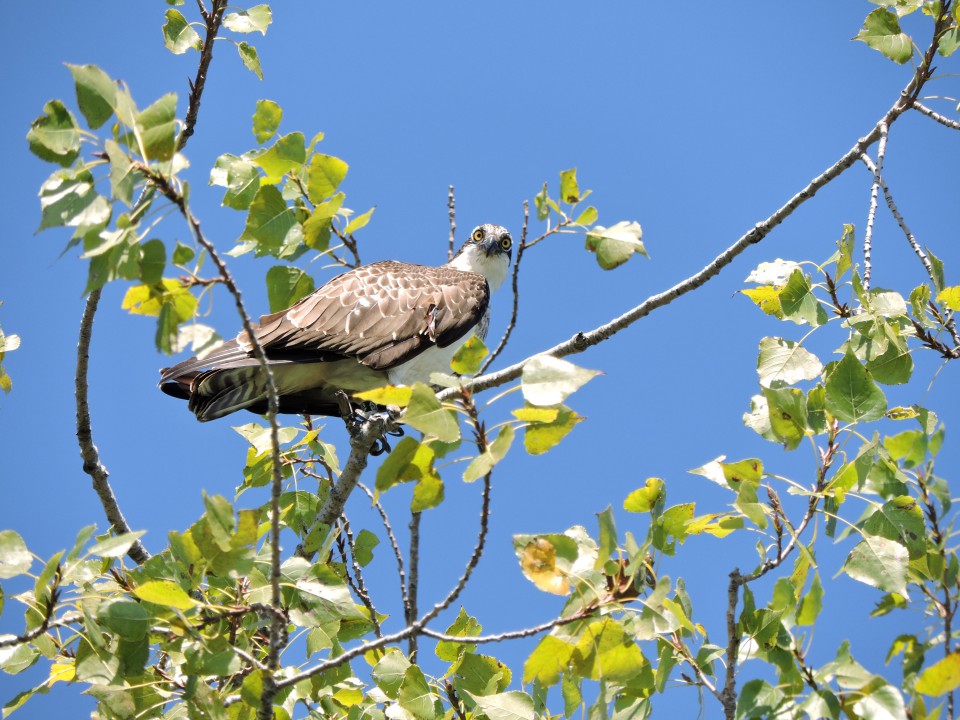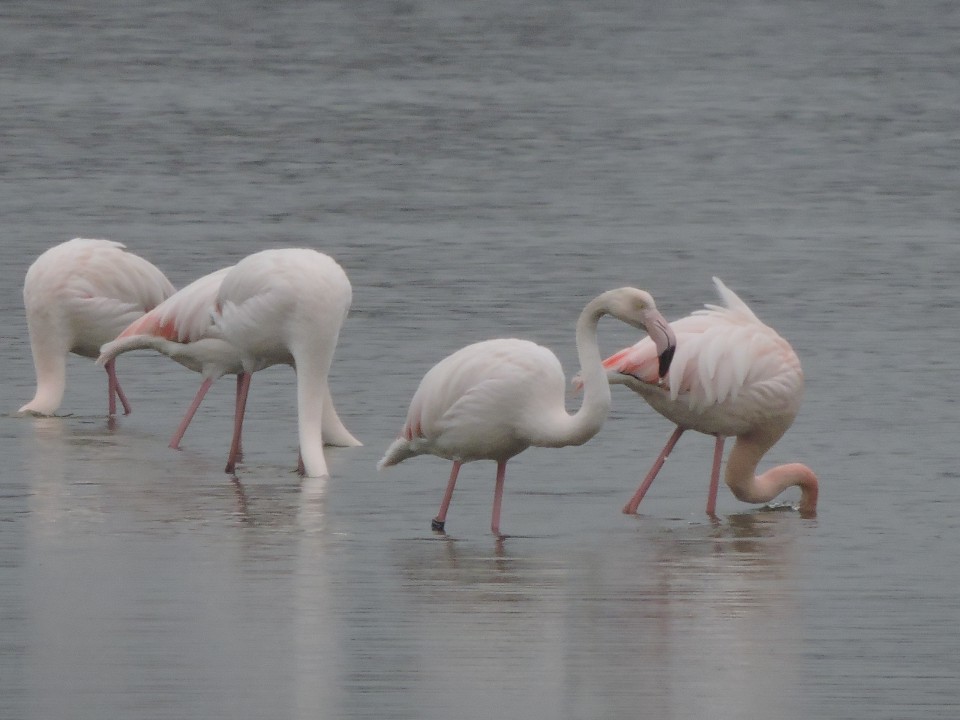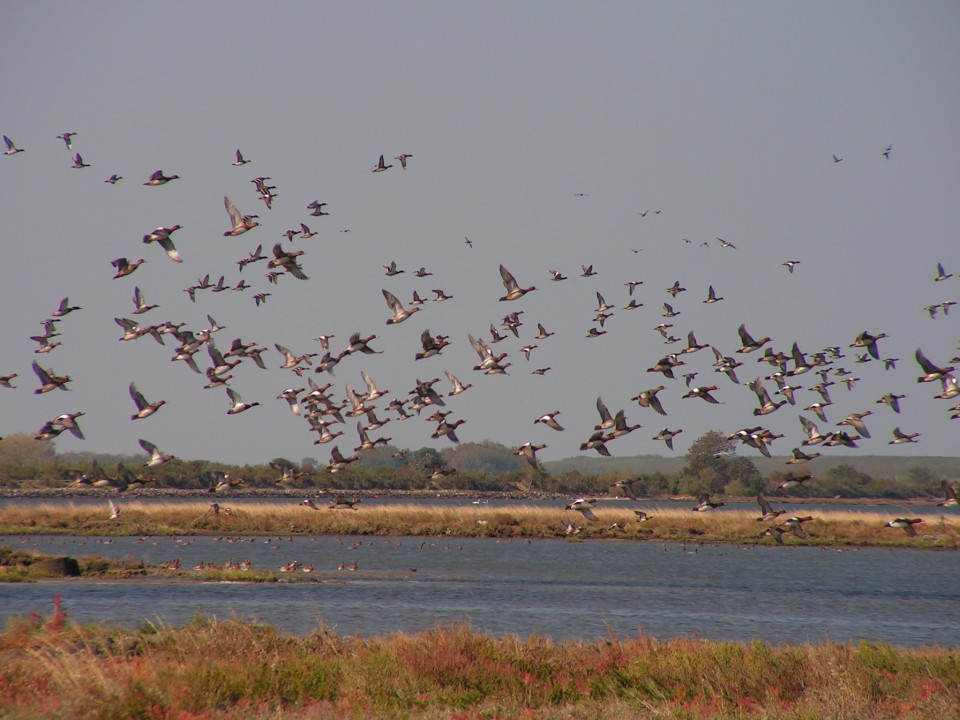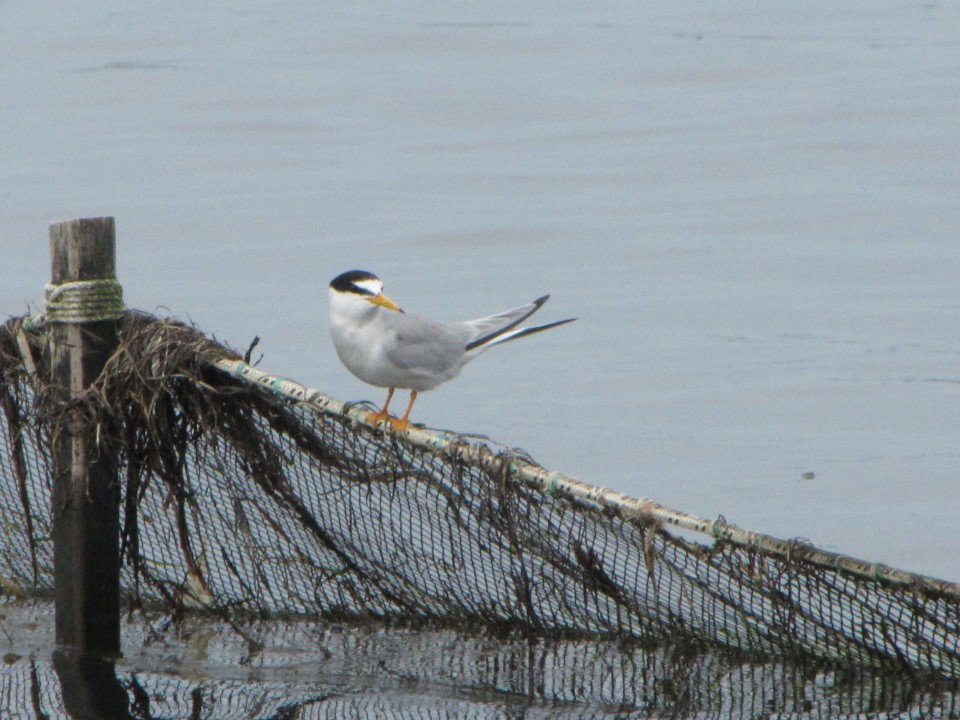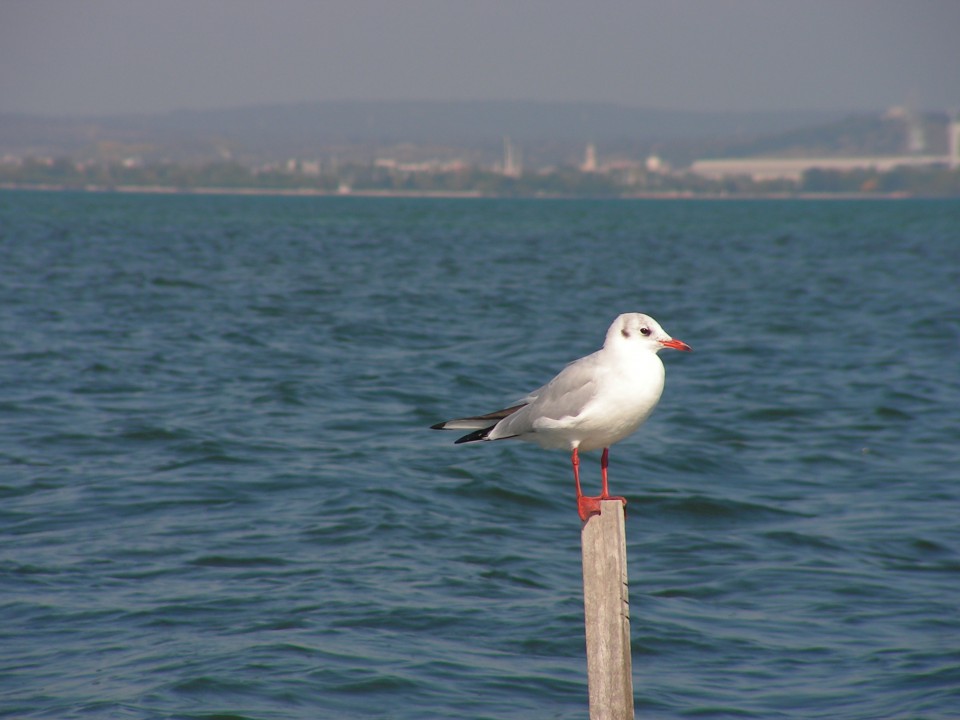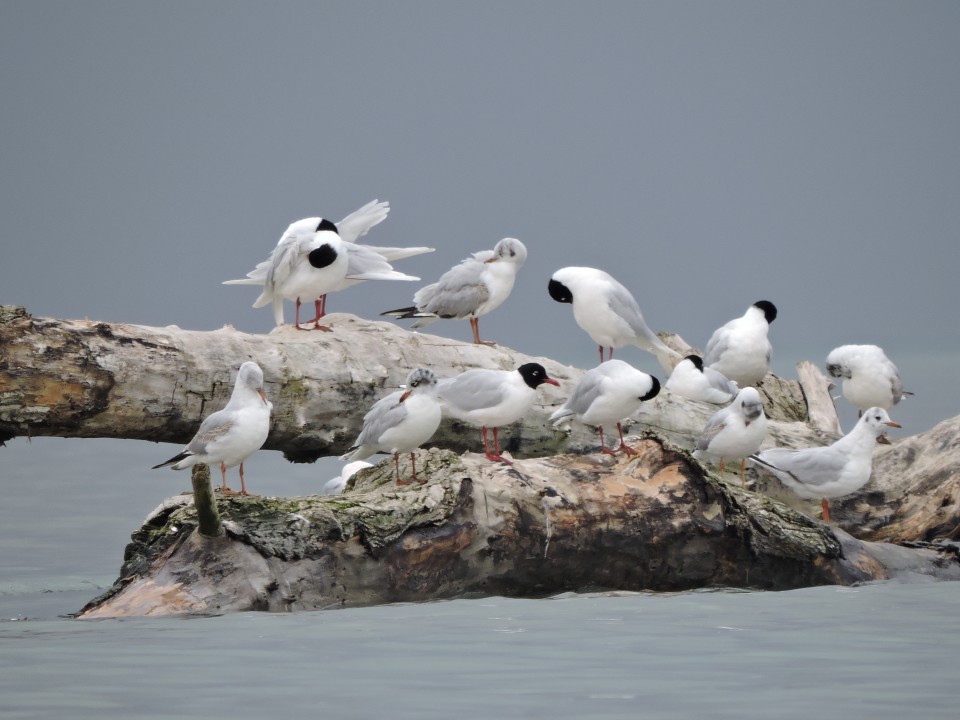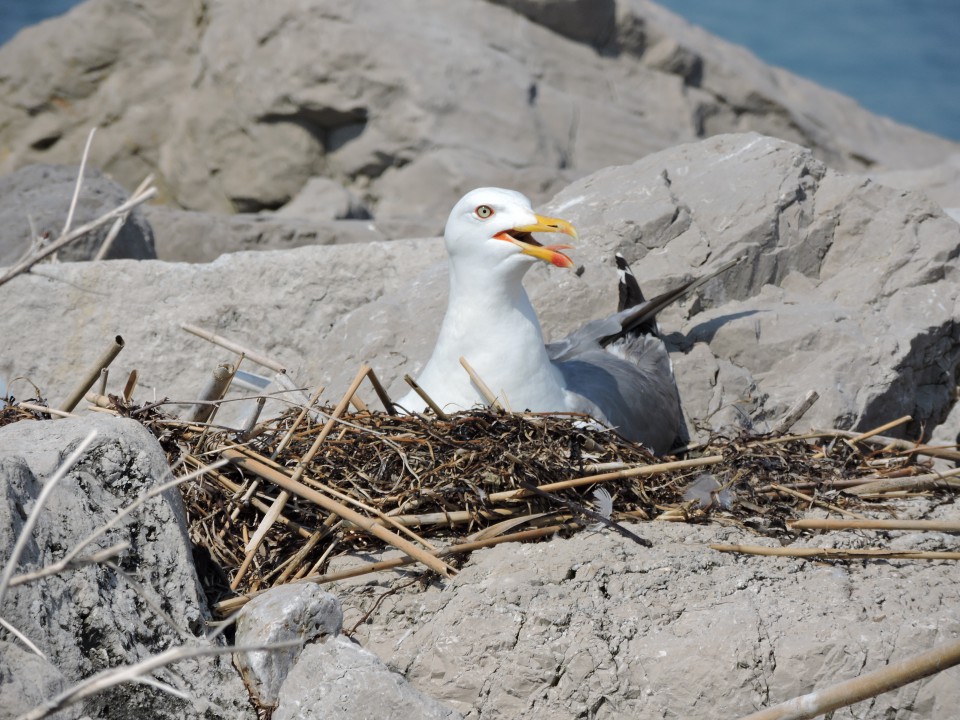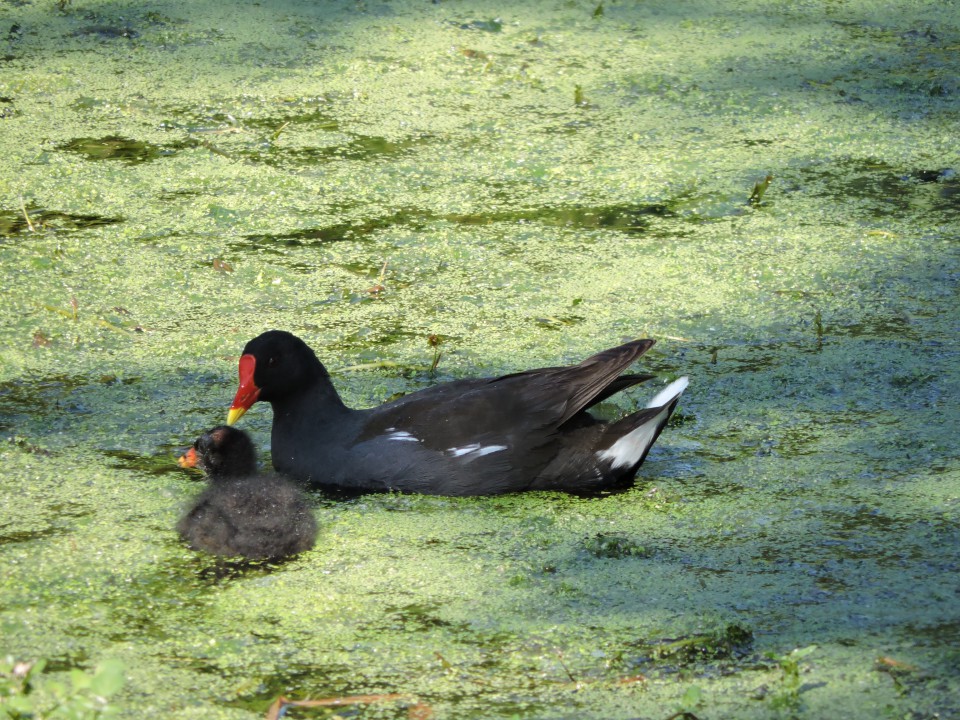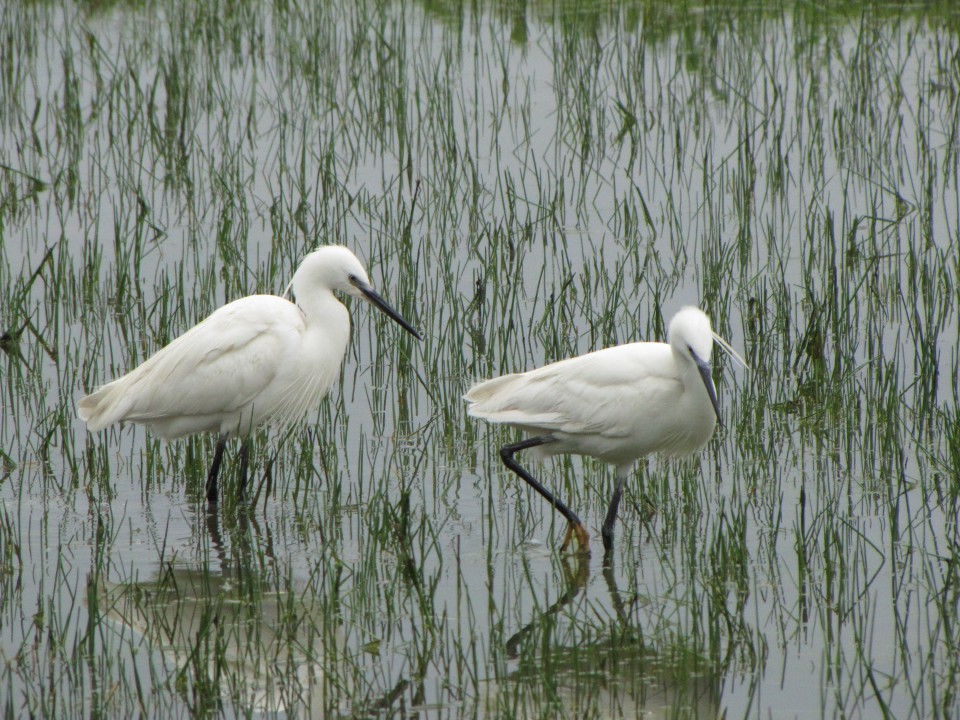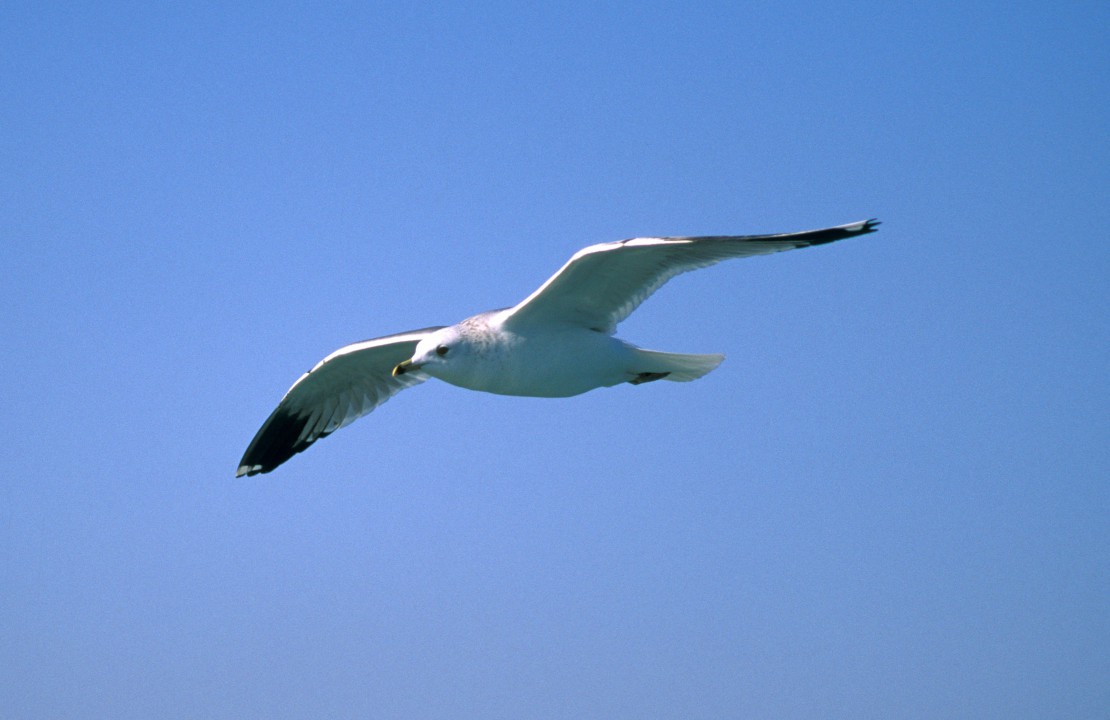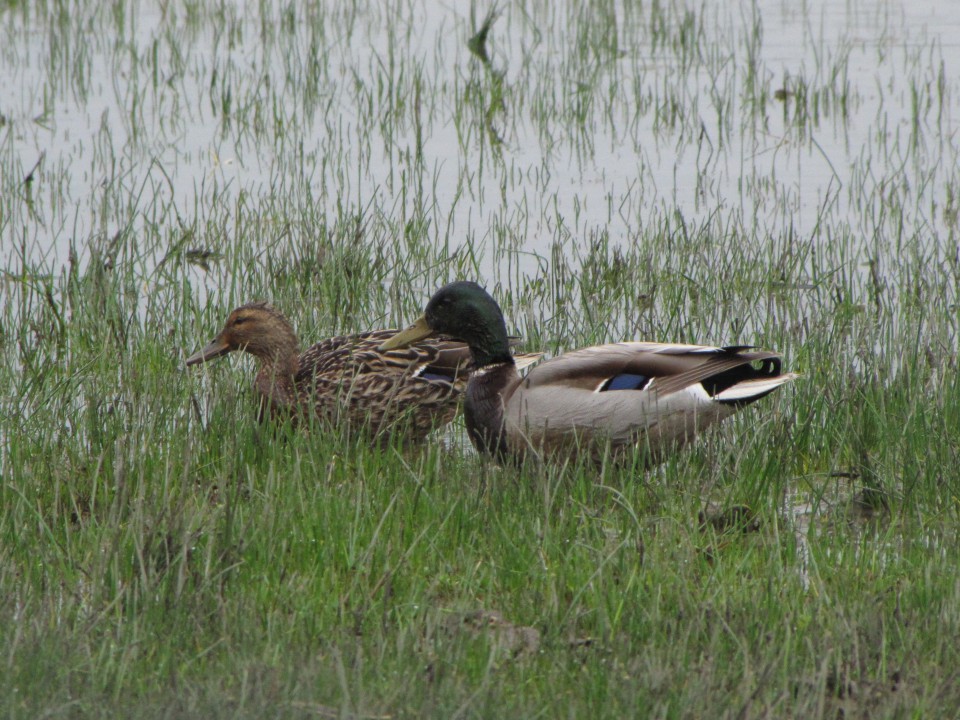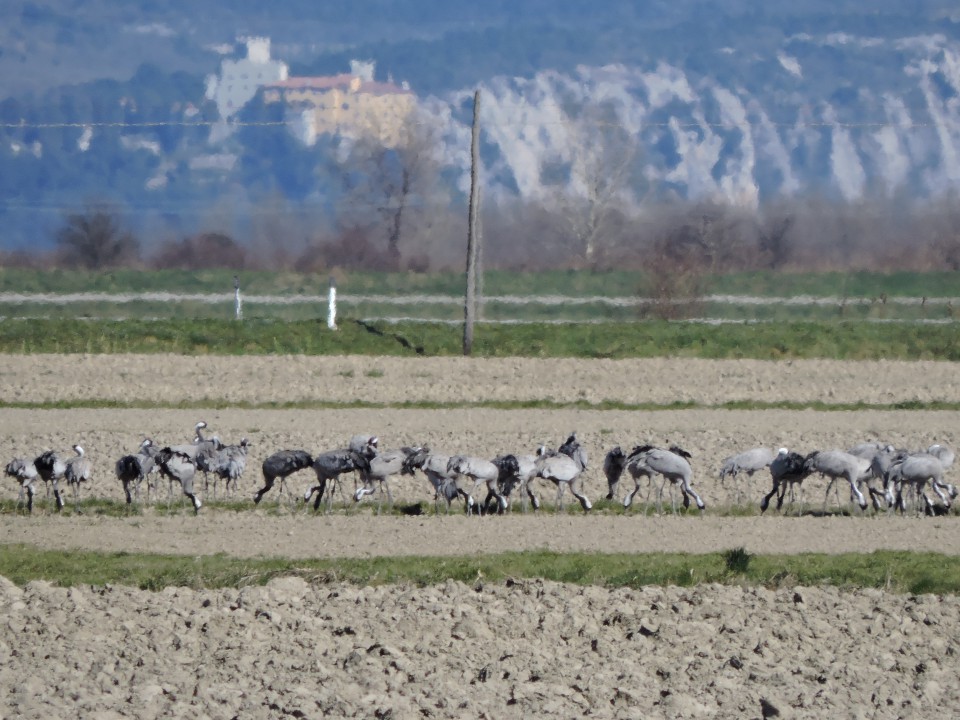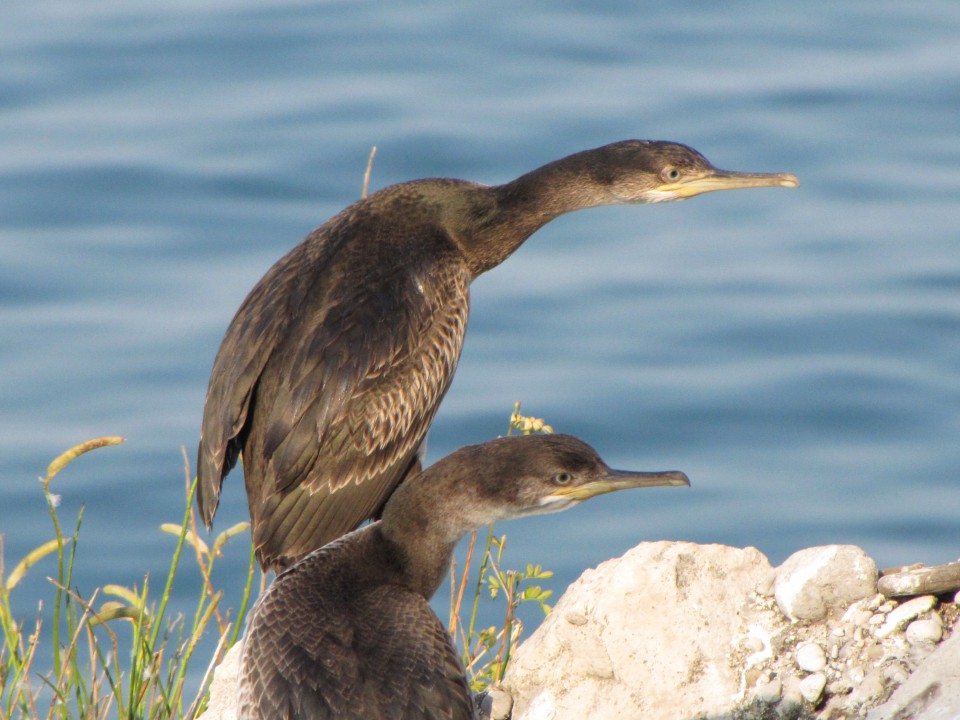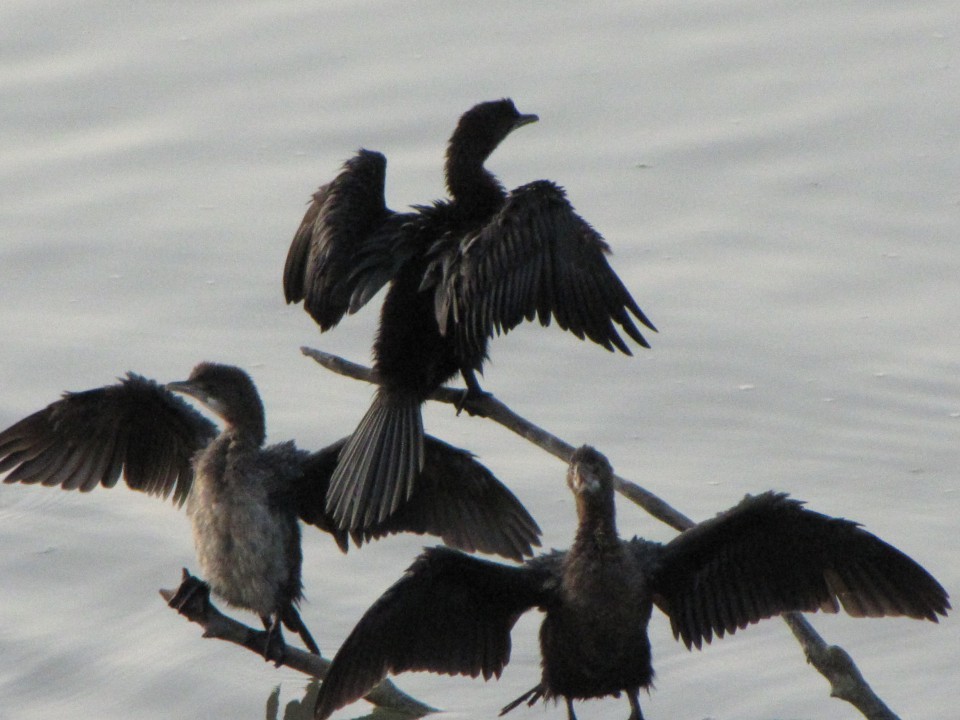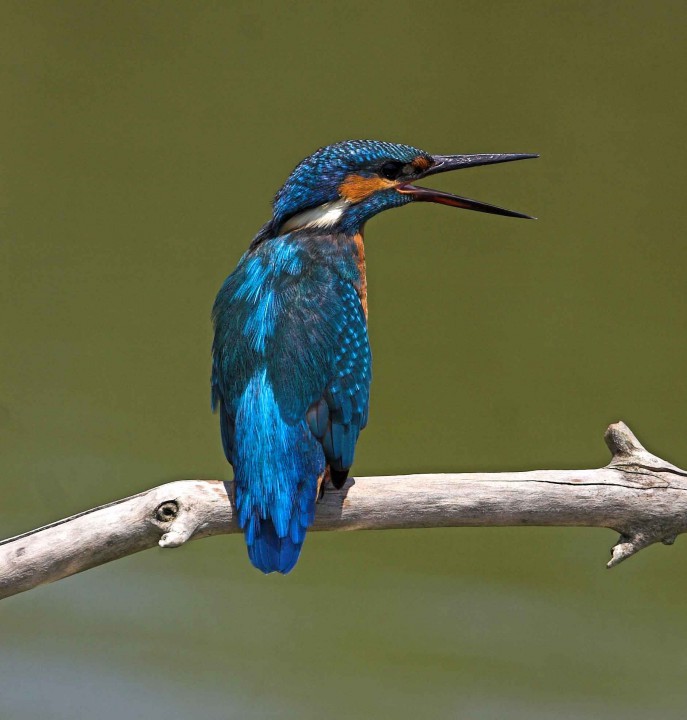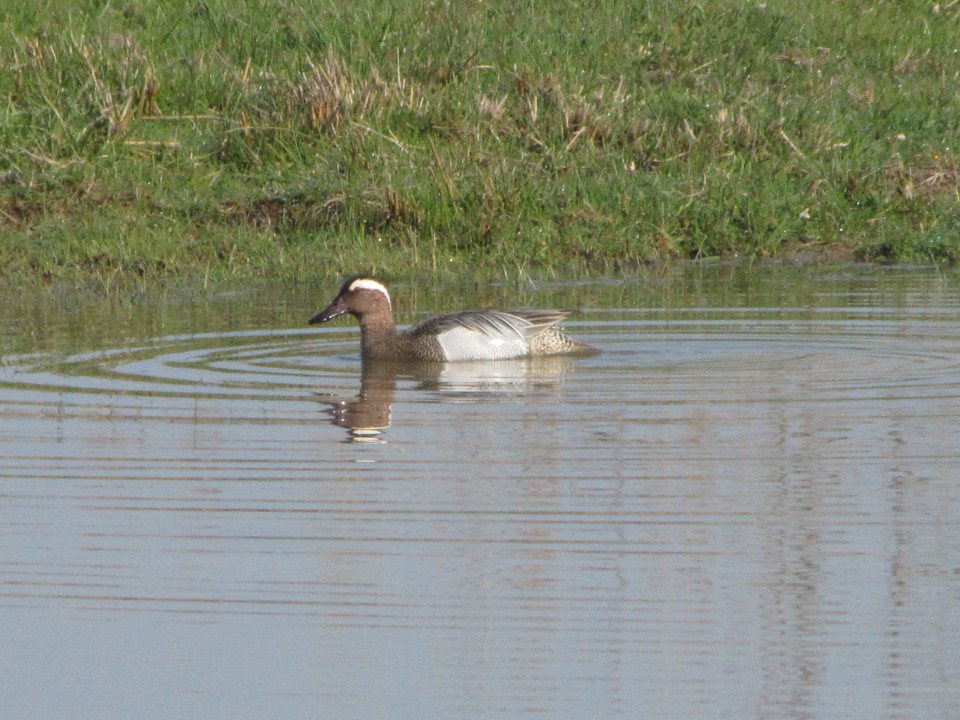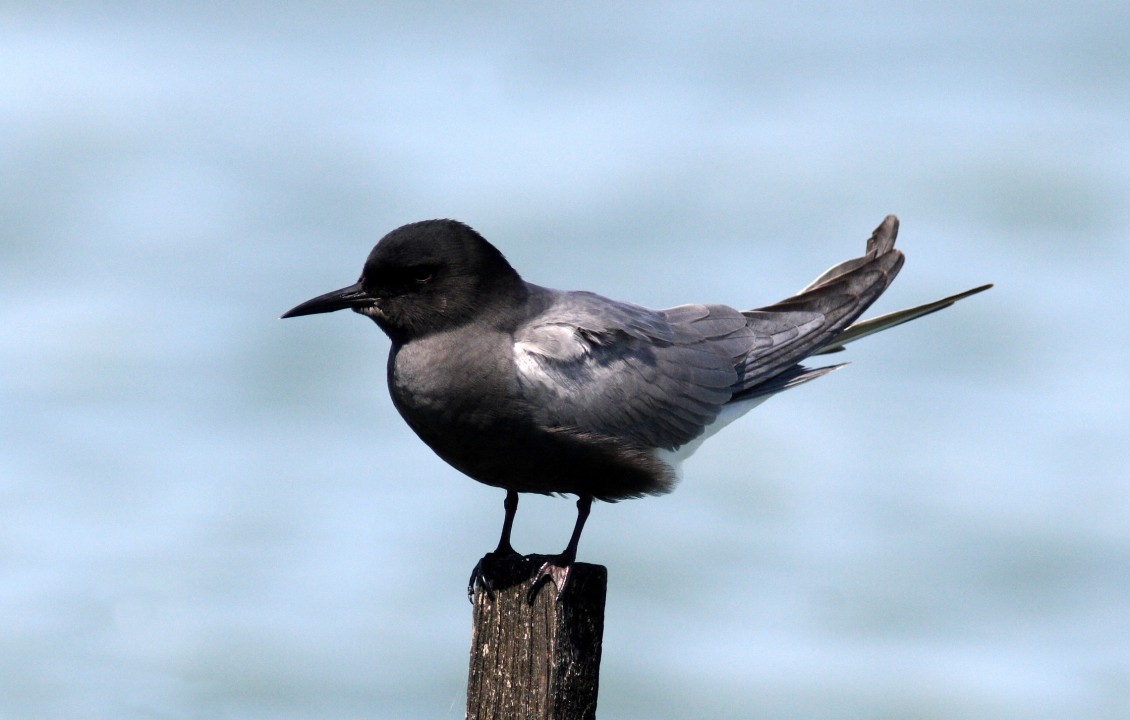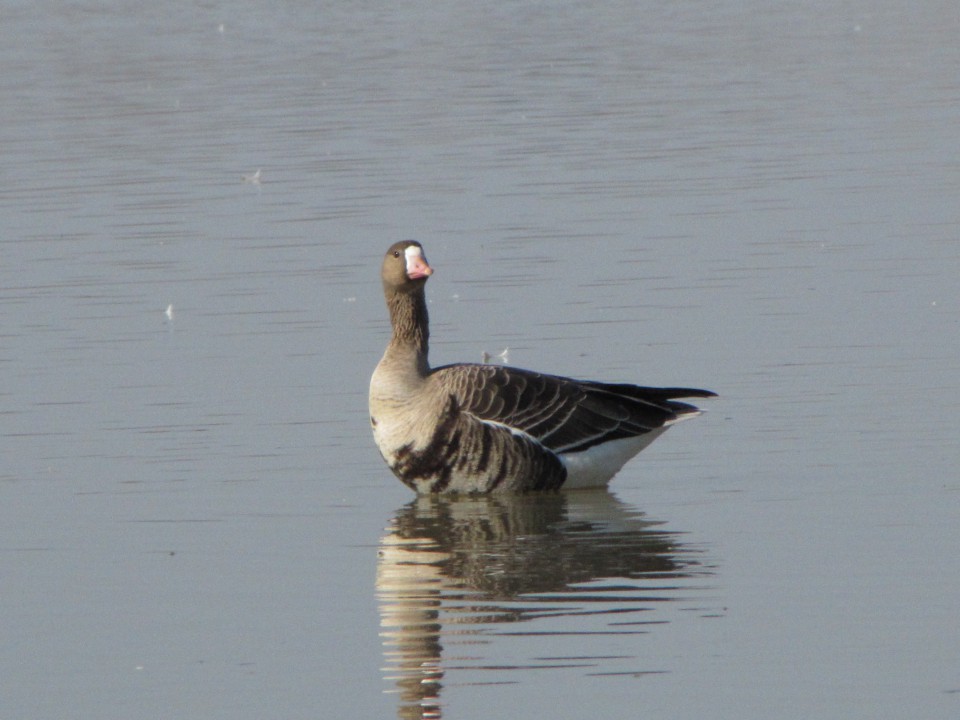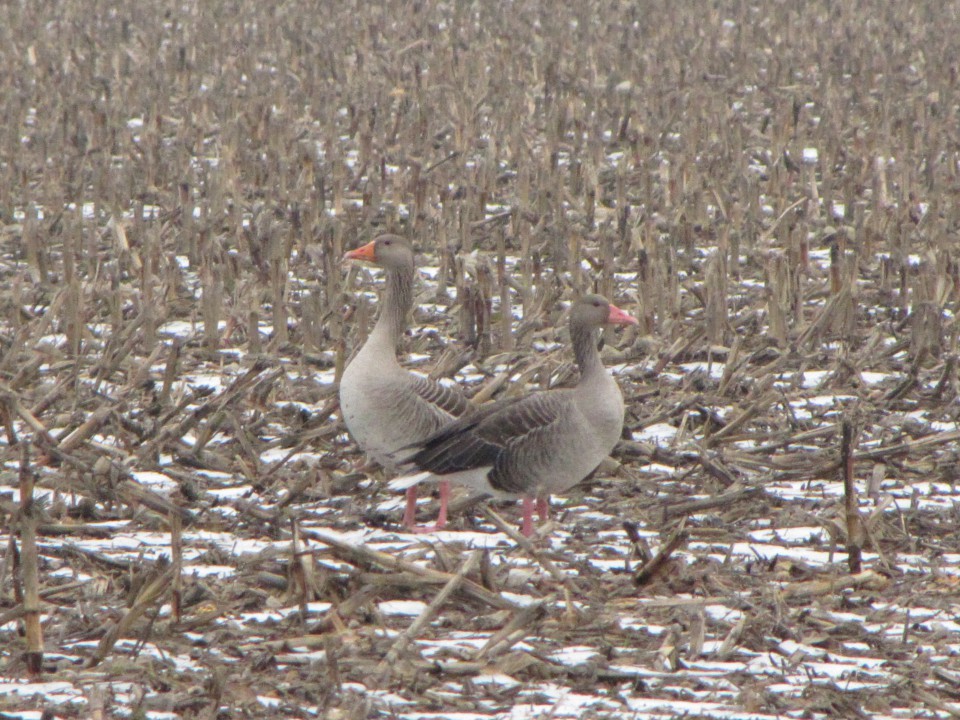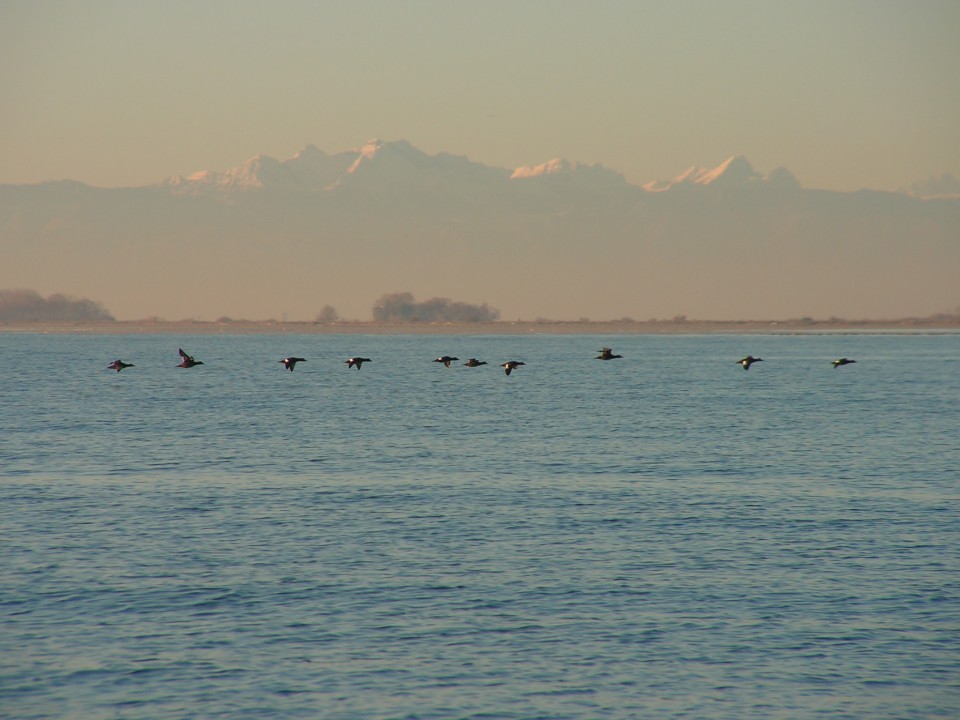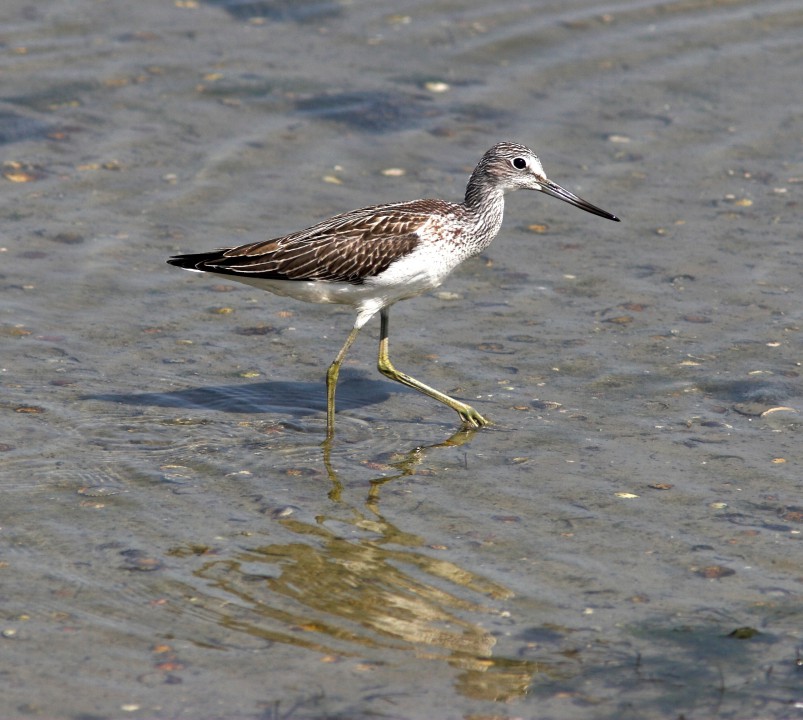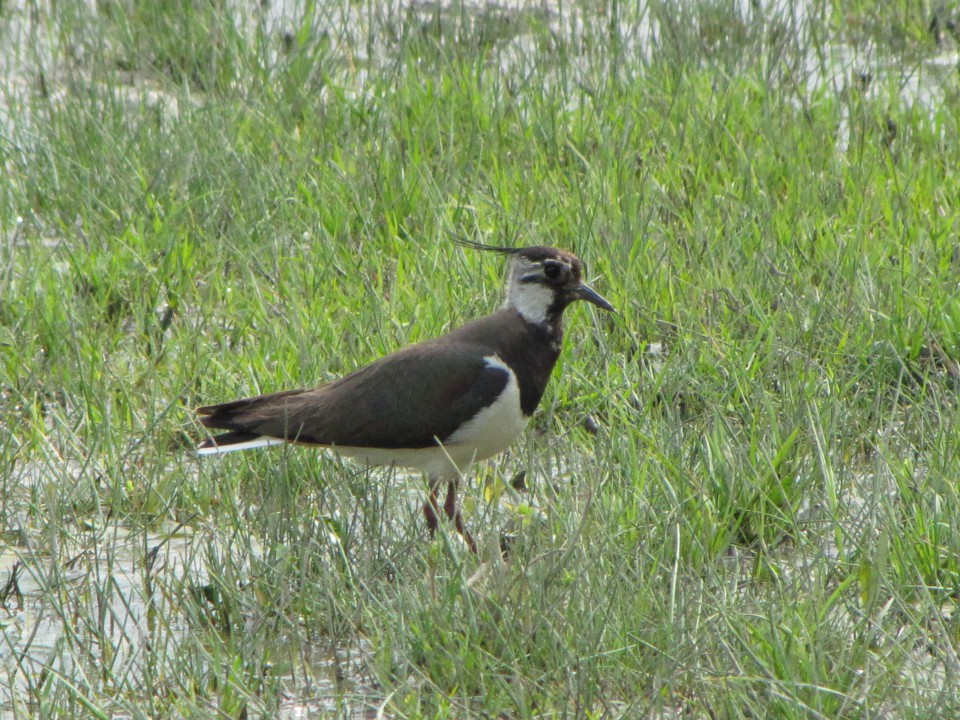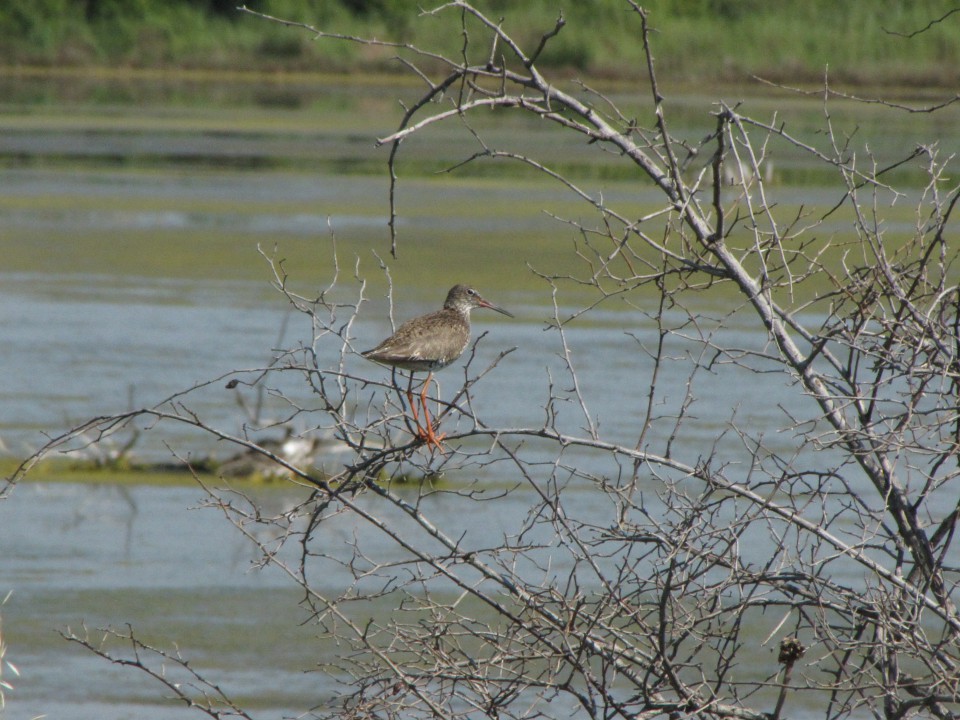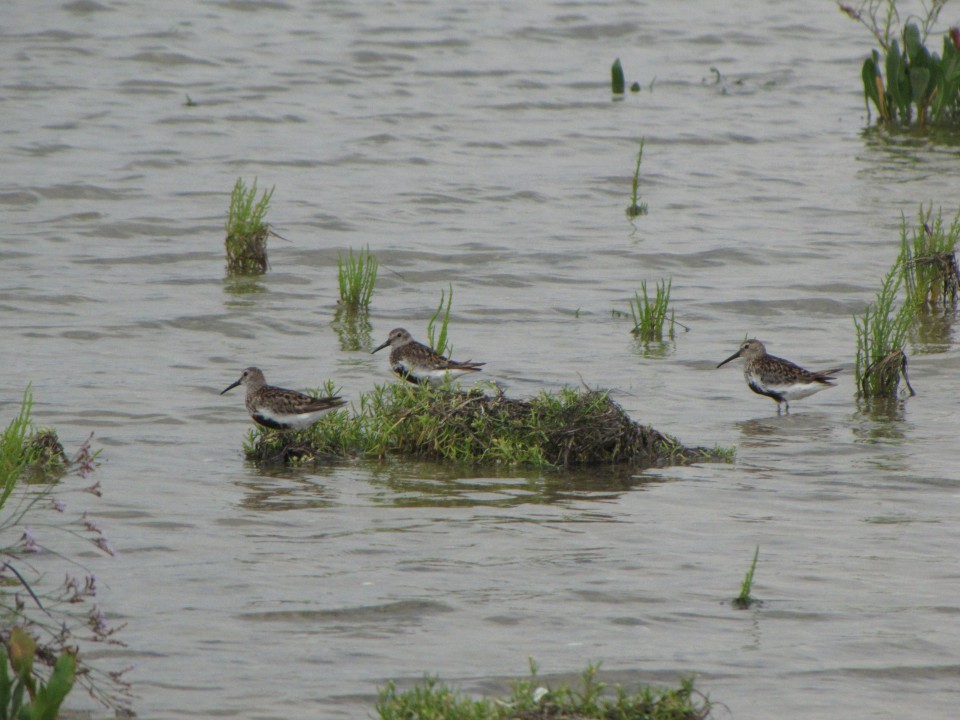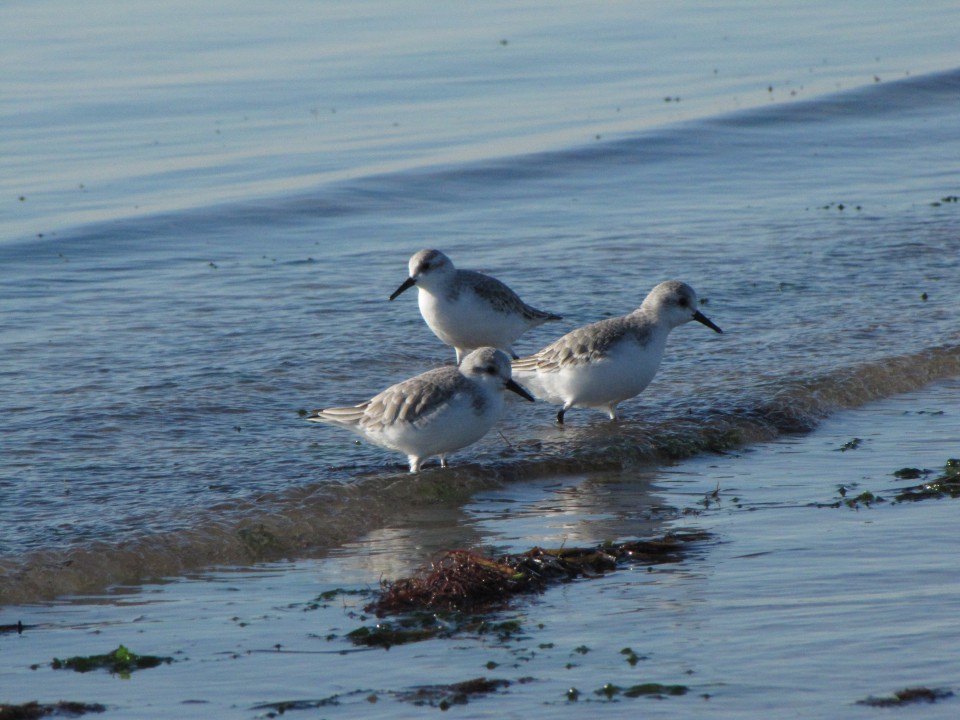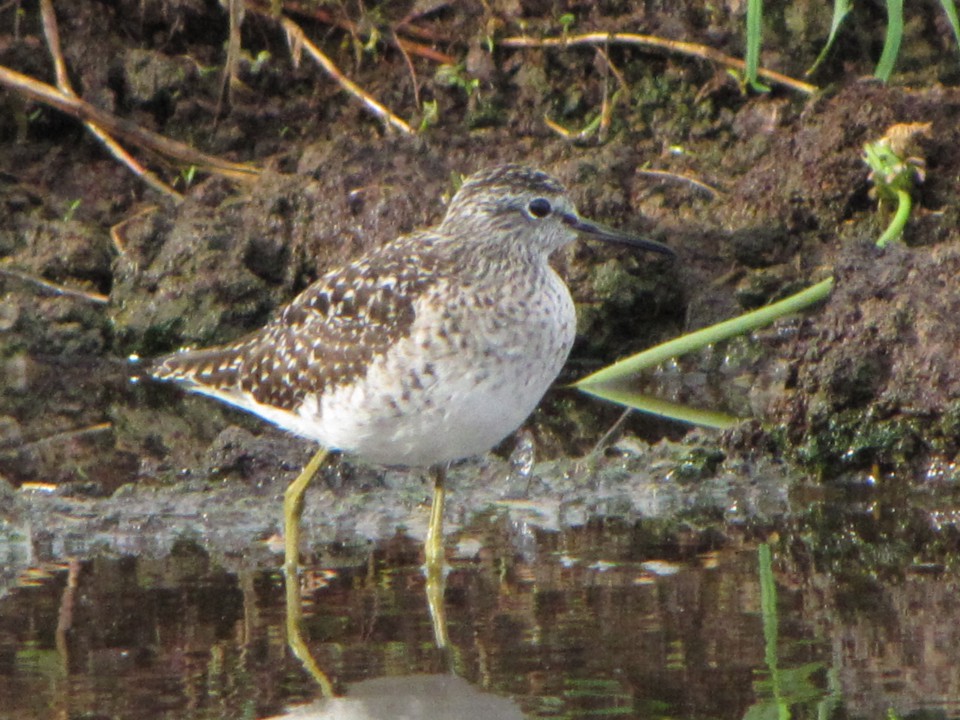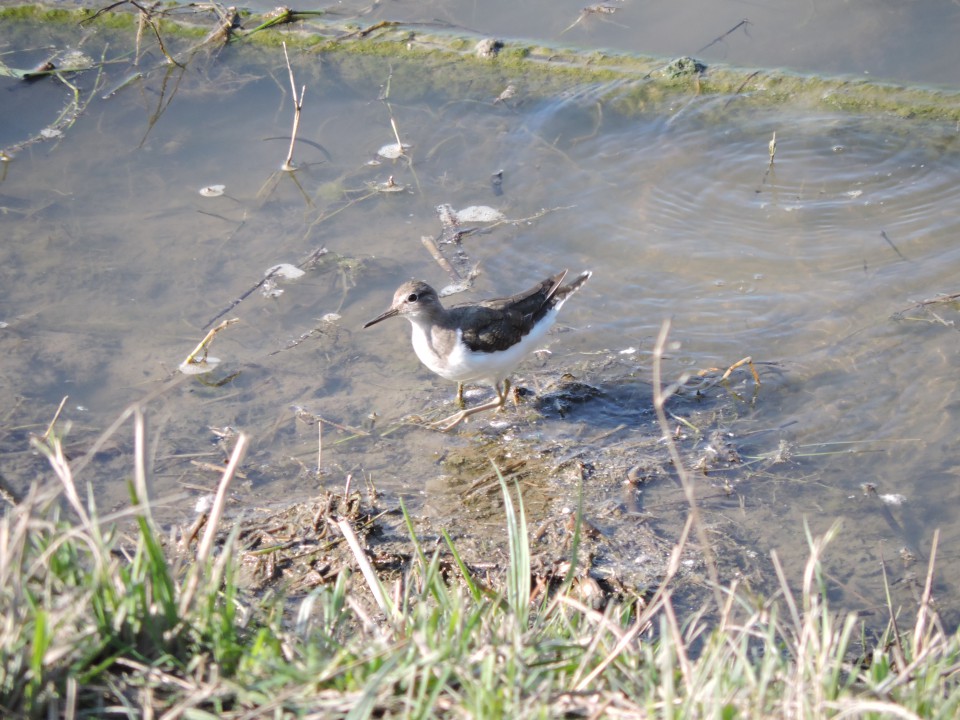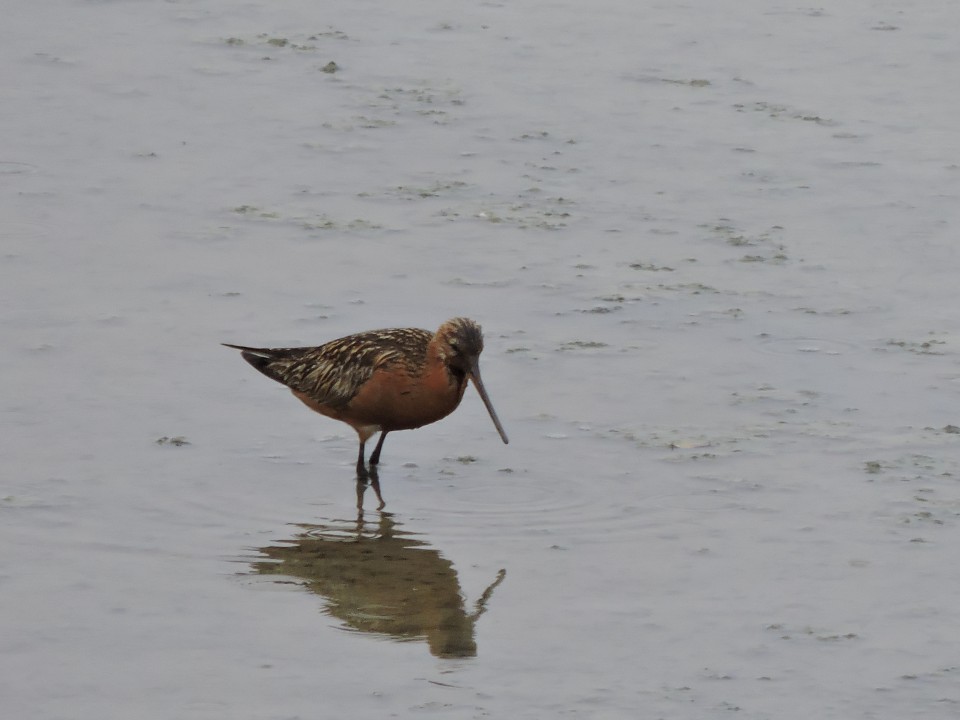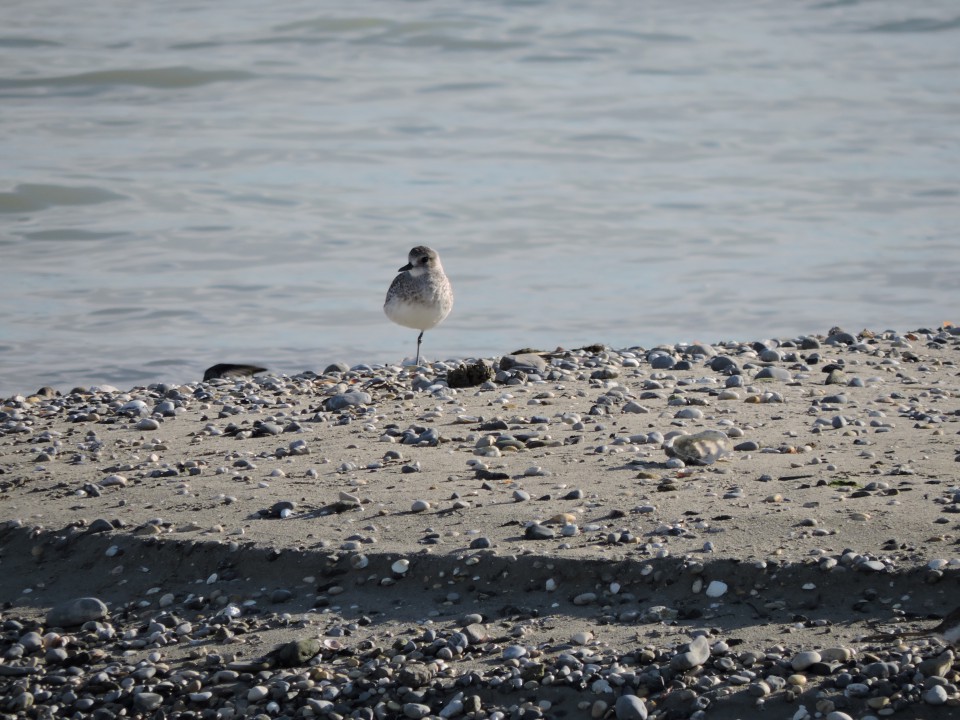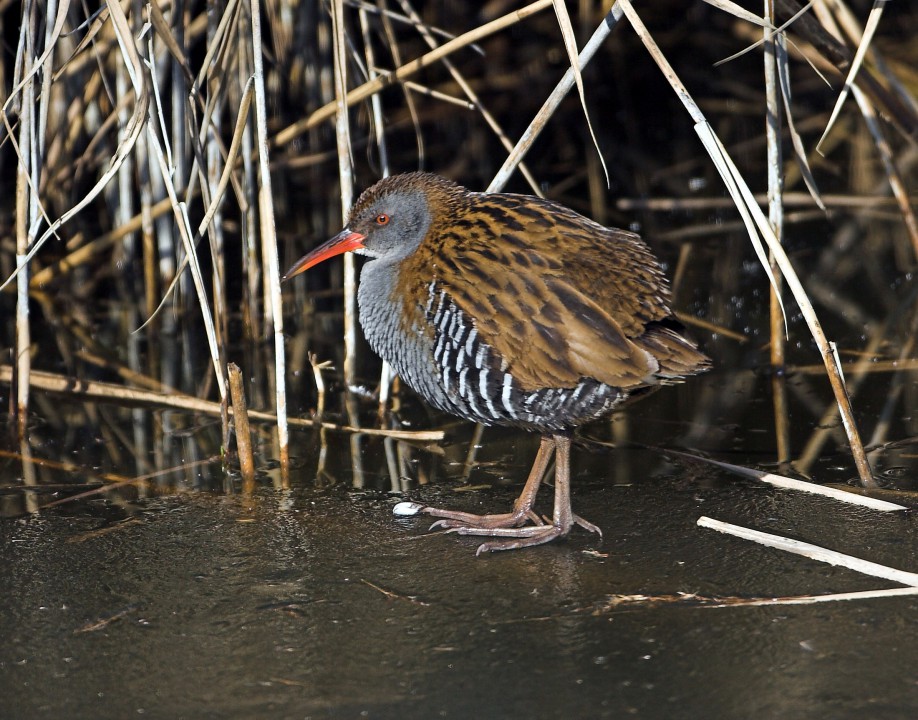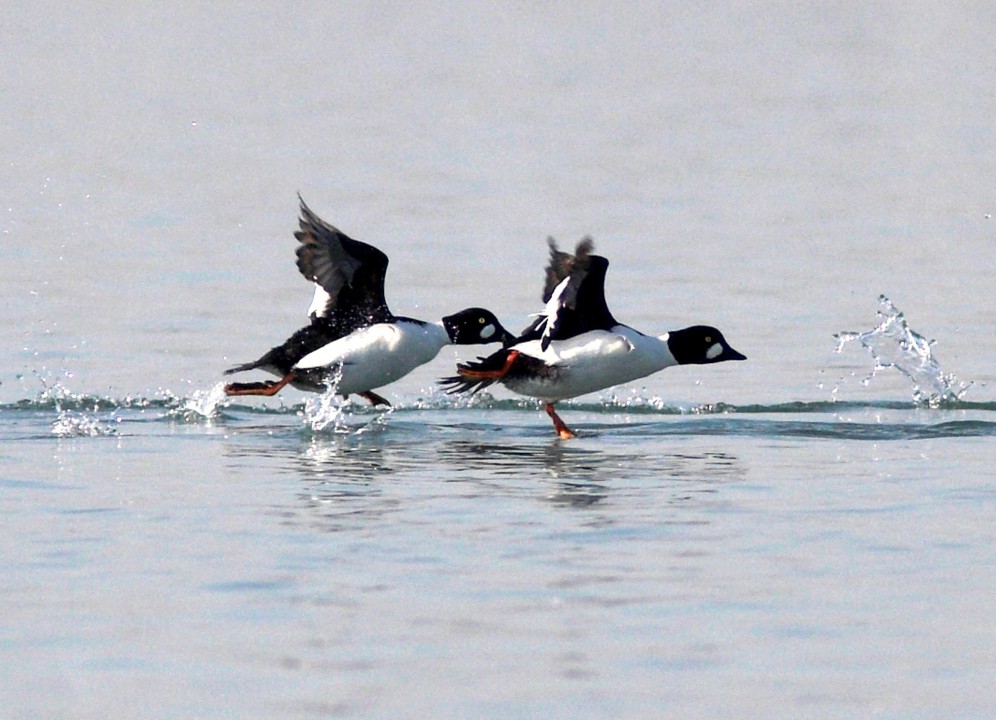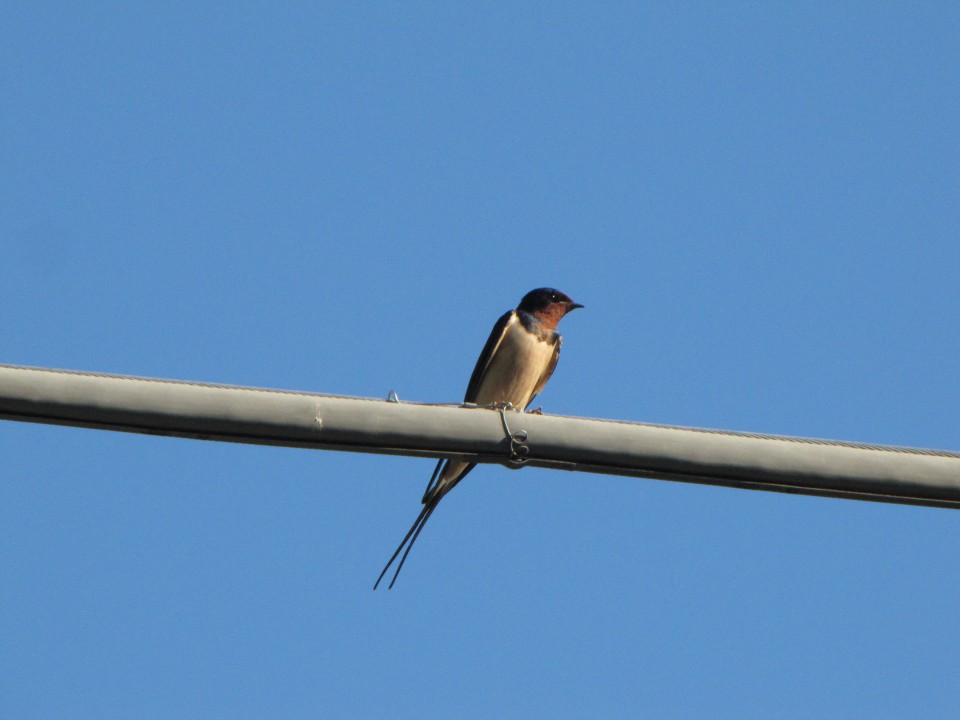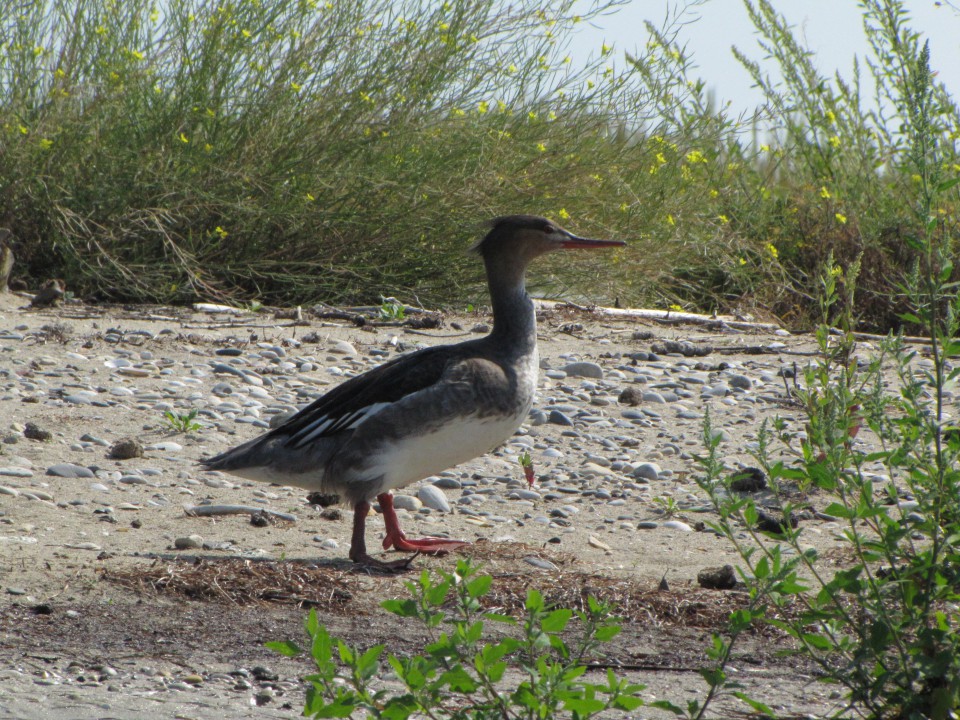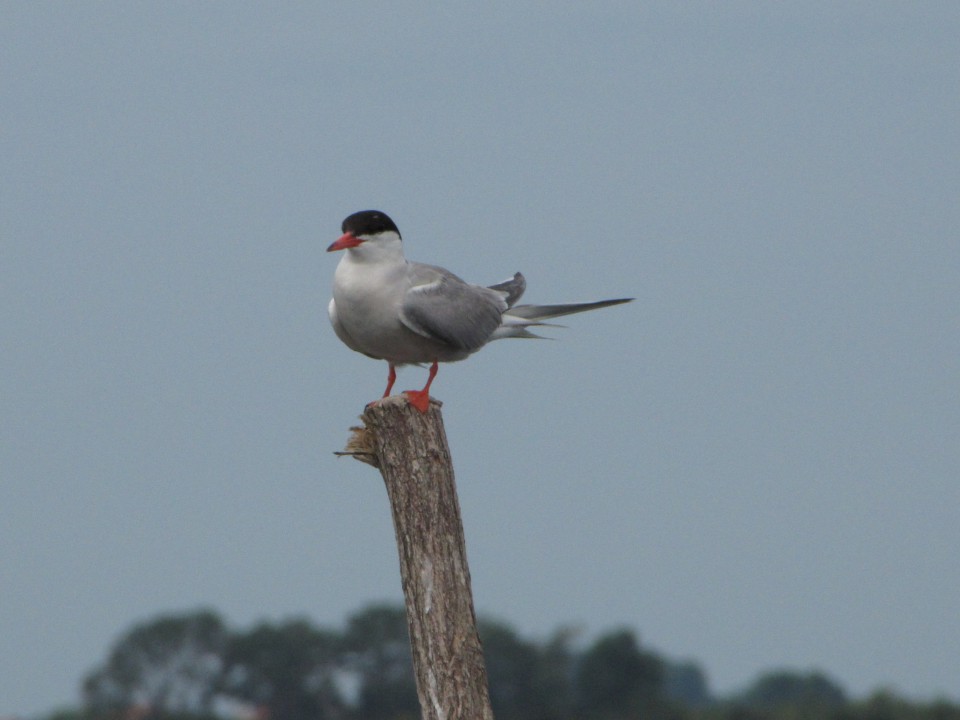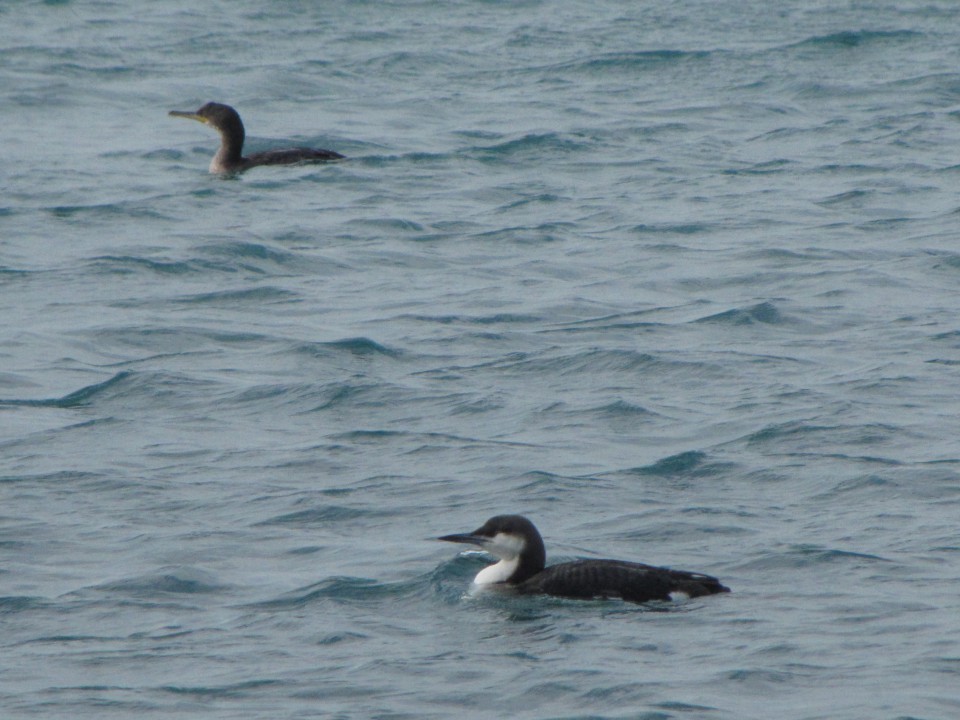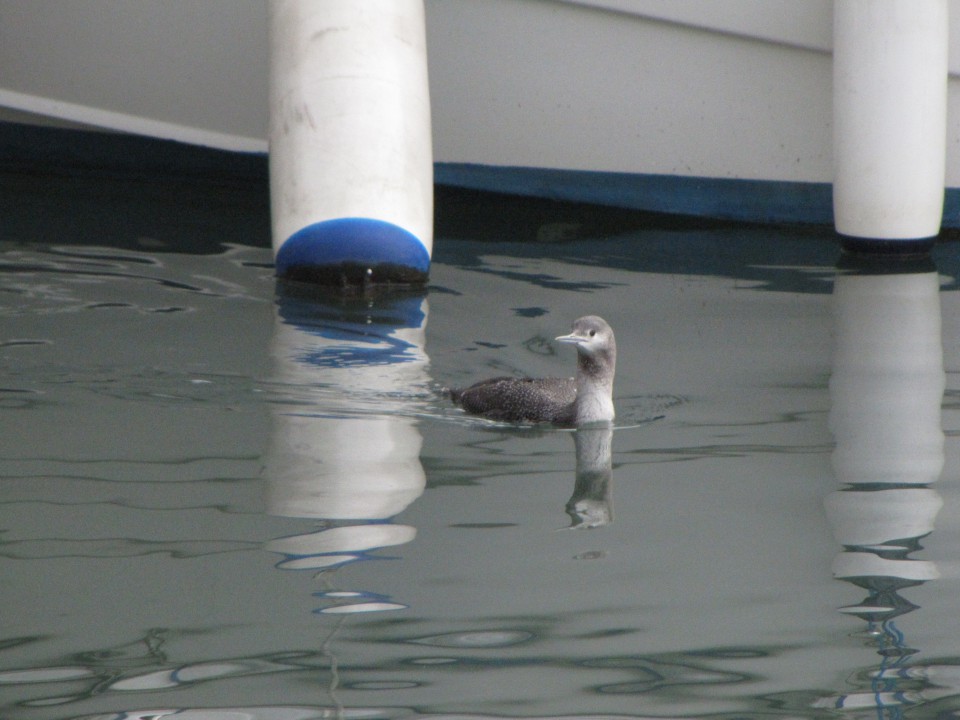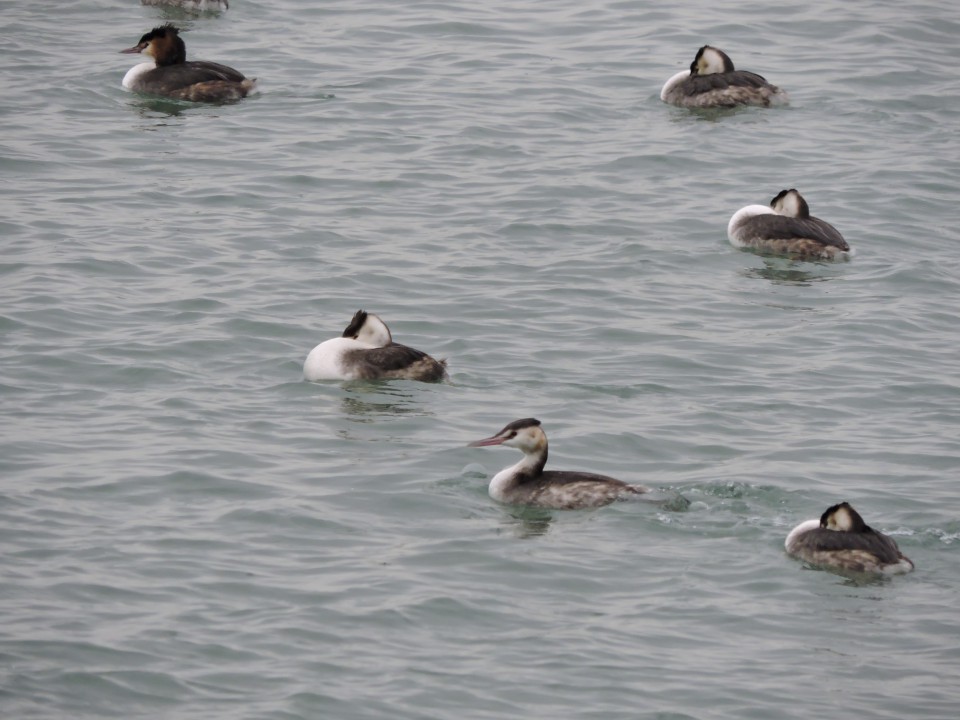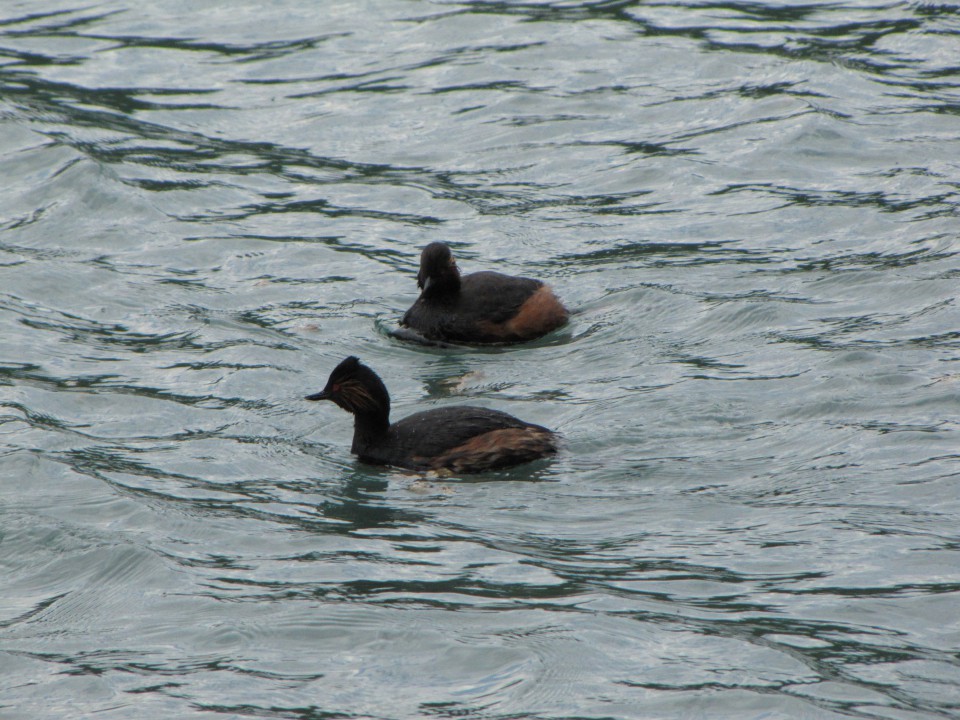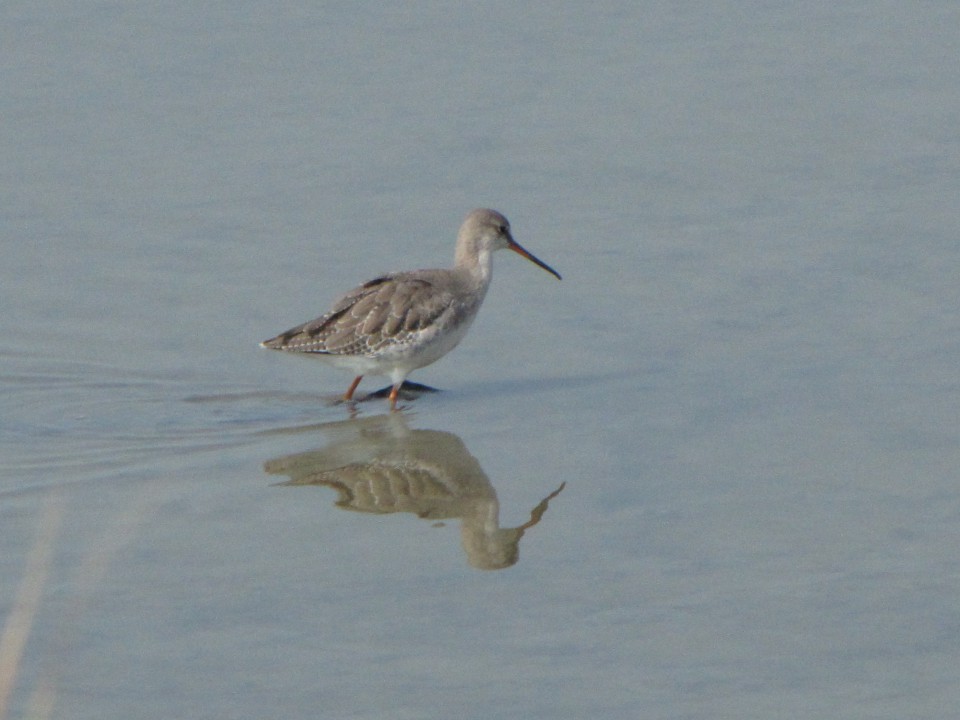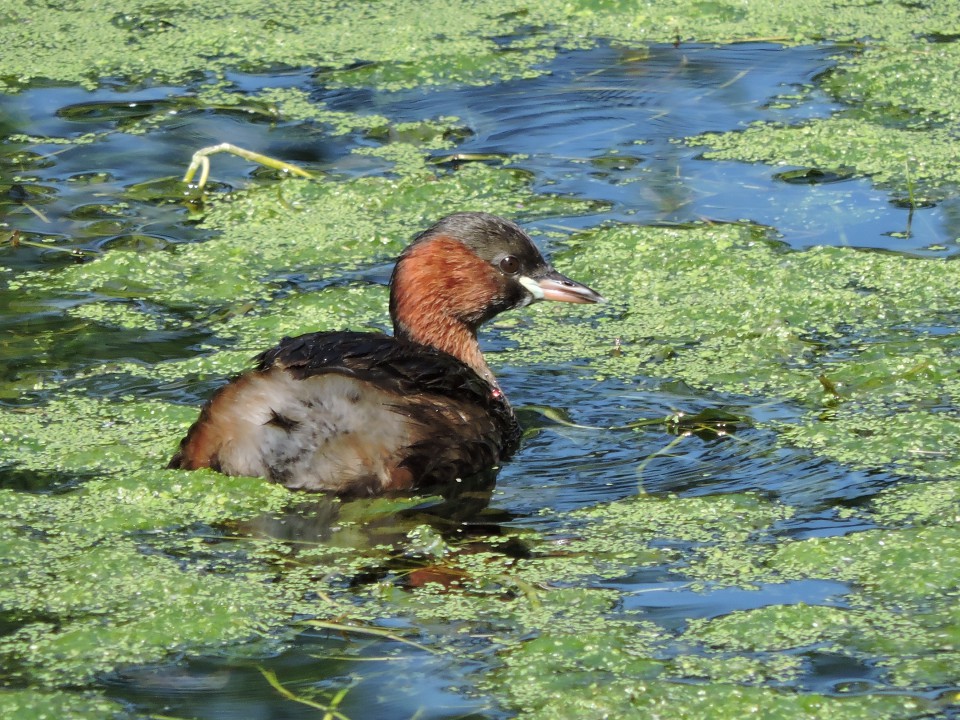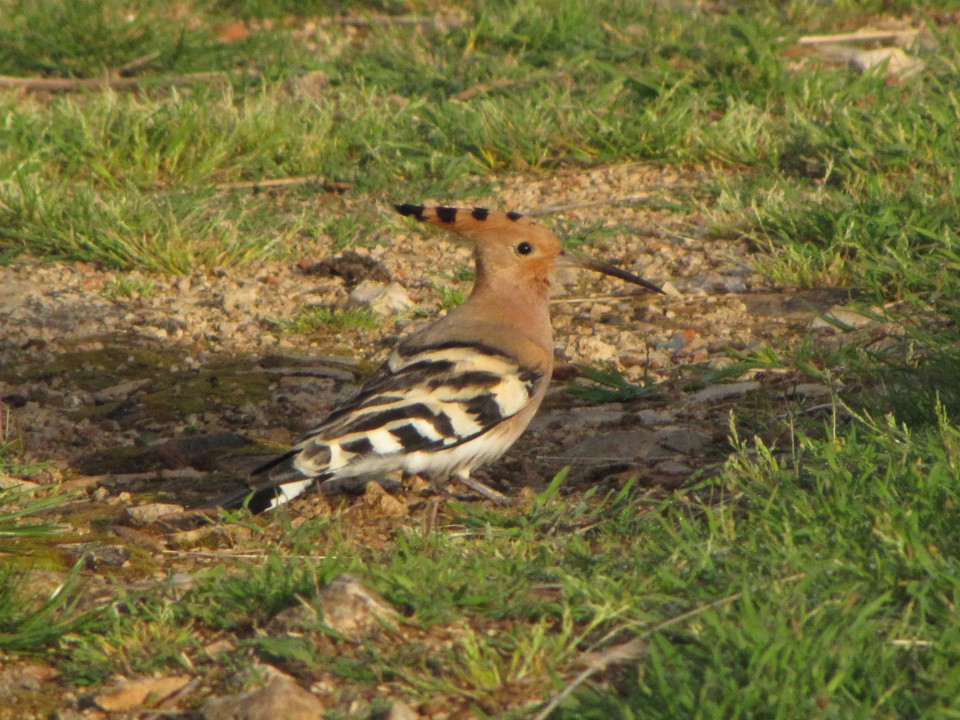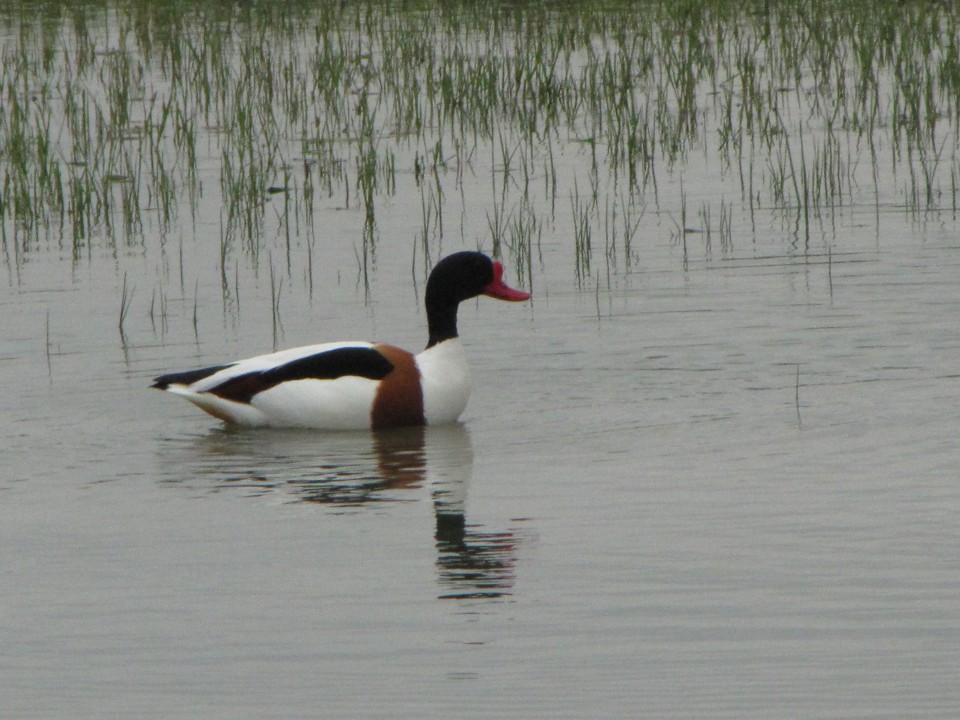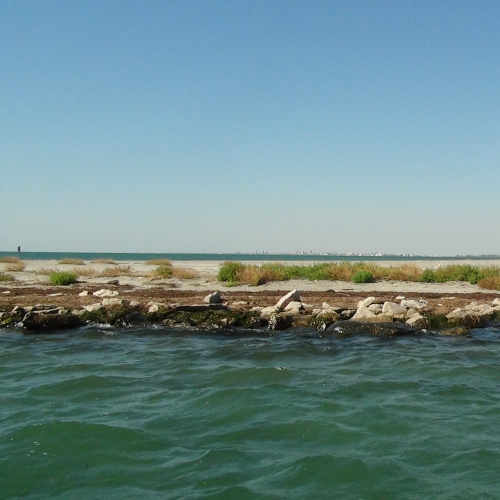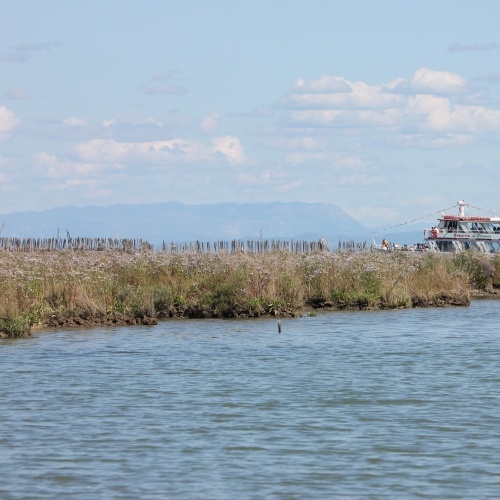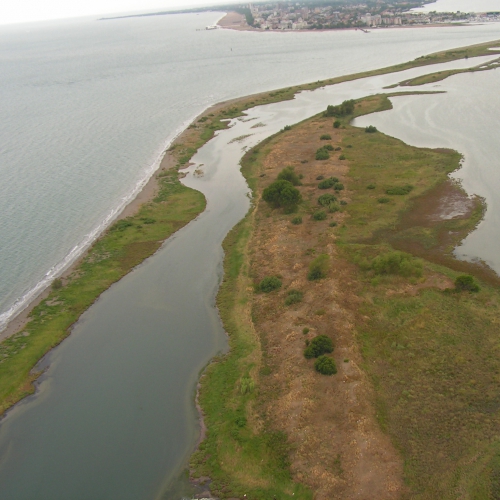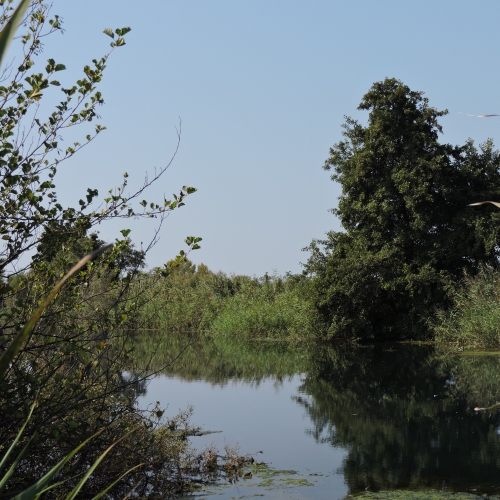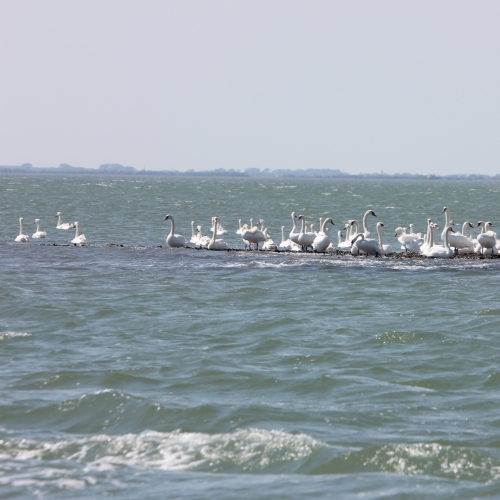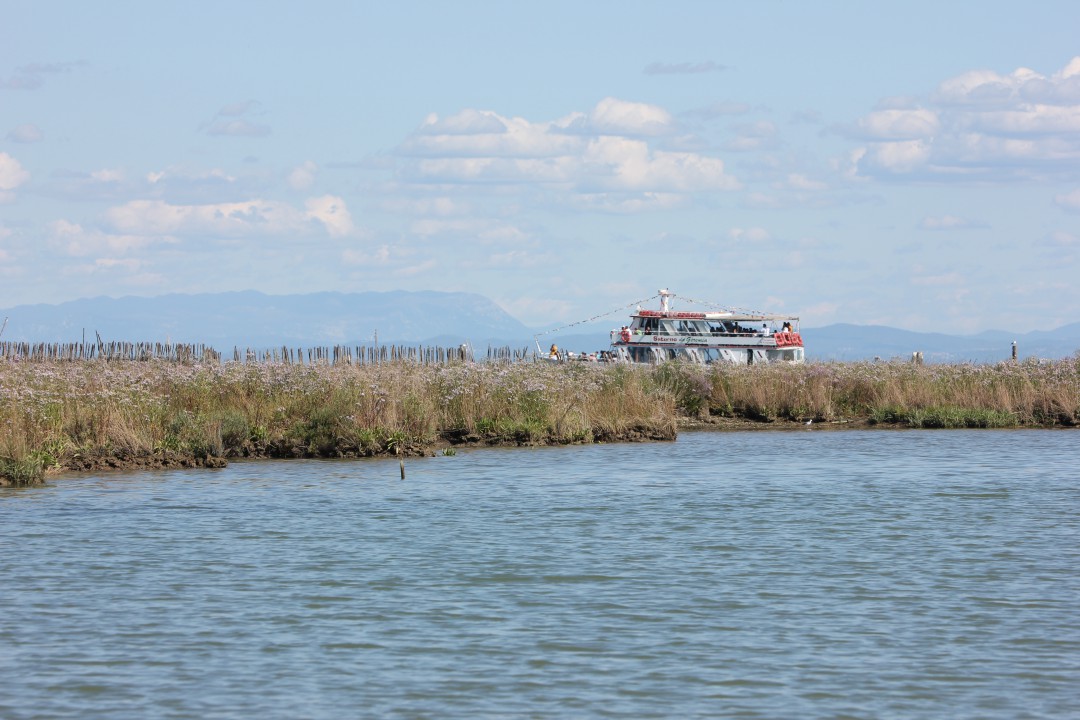
Descrizione
L’allacciante di Sant’ Andrea, chiamata “trincea” dai locali, è un canale artificiale che fa parte della Litoranea Veneta e che mette in comunicazione il bacino di S. Andrea e di Buso con quello di Lignano. La barena adiacente al canale ospita importanti dormitori di uccelli acquatici ed in particolare il chiurlo maggiore. Alla fine del canale verso occidente si giunge alla “ponta de Meso” e al canale di Marano che connette l’abitato omonimo con il mare attraverso porto Lignano, passando per la Bocca dei Tre Canali dove c’è l’intersezione tra il canale che porta al mare, quello che prosegue verso occidente ed il canale di Marano. La zona è molto trafficata da diportisti e pescatori. Il canale di Marano nell’ultimo tratto è stato rettificato e sulla destra entrando ancora si scorge il tracciato originario compreso tra le barene e quello che resta delle mote di alcuni casoni: la vegetazione più verdeggiante e la presenza di tamerici indicano la presenza dei vecchi rilevati.
Tradizioni
Il casone lagunare ha un’ origine molto antica e attualmente è presente nelle lagune di Grado Marano e nella laguna di Caorle, in...
Ambienti
Le zone normalmente emerse della laguna sono denominate “barene” e sono caratterizzate dalla vegetazione alofila cioè tipica...
Non è sempre facile individuare una chiara separazione tra gli ambienti alofili (salmastri) delle lagune e quelli d’acqua dolce alle...
Il sistema lagunare del Friuli Venezia Giulia si estende tra la foce dell’Isonzo e quella del Tagliamento. Rispetto alla “sorella...
Una delle più estese e vitali praterie sommerse del Golfo è quella antistante le foci dell’Isonzo. Si tratta di piante con...
Le zone regolarmente sommerse dall’alta marea che si scoprono durante la bassa prendono il nome di “piana di marea”. Nel Friuli...
Uccelli
cm 85-100, sessi simili. Piumaggio bianco, becco giallo che diviene nero in periodo riproduttivo. Presente tutto l’anno, non nidifica. Numeroso...
cm 84-102, sessi simili. Presente tutto l’anno nidifica in colonia in boschetti lagunari e altre zone boscate dell’entroterra. La nidificazione...
cm 70-90, Sessi simili. Presente da fine marzo a settembre nidifica in colonia in rigogliosi canneti nella laguna di Marano e nei ripristini della...
cm 45-55, spiccato dimorfismo, il maschio è grigio con le punte delle ali nere, la femmina è bruna, entrambi hanno il groppone bianco. Presente...
cm 34-38, è l’ anatra più piccola. Specie prevalentemente svernante, alcune coppie nidificano e concentrazioni si osservano nelle zone umide...
cm 23-28, sessi simili. Molto mimetico con un piumaggio bruno striato, ha un lungo becco diritto ed un volo caratteristico a zig-zag. Presente da...
cm 37-43, sessi simili, grigio chiaro superiormente, bianco nelle parti inferiori, con calottina nera con ciuffo sulla nuca e becco nero con apice...
cm 46-56, caratteristico “specchio alare” bianco. Specie prevalentemente svernante, alcune coppie nidificano. Frequenta le zone umide d’acqua...
cm 48-57, sessi simili. Brunastro con lungo becco ricurvo. Presente tutto l’anno ma non nidifica. Forma aggregazioni durante l’alta marea su...
cm 37-45, sessi simili. Brunastro con becco ricurvo, più corto del chiurlo maggiore, presenta caratteristiche strie scure sulla testa. Presente...
cm 140-160, colore bianco, grigio nei giovani, tubercolo alla base del becco, più evidente nel maschio. Presente tutto l’anno, numeroso presso...
cm 51-62, anatra elegante con collo lungo e, nel maschio lunghe timoniere centrali. Specie svernante, frequenta le piane di marea, i ripristini...
cm 22-32, spiccato dimorfismo sessuale: il maschio è nettamente più grande e a maggio inizia a vestire un caratteristico abito nuziale. Il...
cm 77-94, sessi simili. Come pellicani e sule ha le 4 dita congiunte dalla membrana natatoria. Specie presente tutto l’anno, aumenta notevolmente...
cm 17-19,5, sessi simili. E’il corriere di dimensioni maggiori. Ricorda il corriere piccolo ma più massiccio con tratti più marcati e barra alare...
cm 15-16, maschio con capo grigio e gola bianca nella sottospecie cinerocapilla , ventre giallo, coda lunga con timoniere esterne bianche. Durante le...
cm 43-55, spiccato dimorfismo, il maschio è più colorato mentre la femmina è tutta scura con testa e spalle giallo paglierino. Presente tutto...
cm 52- 60, parti superiori scure, inferiori bianche, ali lunghe. Presente durante le migrazioni in particolare in aprile -maggio e agosto-settembre....
cm 120-145, gli adulti hanno un tipico piumaggio rosa-rosso mentre i giovani sono grigi. Presente tutto l’anno ma con consistenze molto variabili...
cm 42-50, il maschio presenta una caratteristica macchia bianca sulle copritrici dell’ala. Specie svernante molto numerosa da settembre a marzo,...
cm 36-42, sessi simili. Nera fumo con becco e placca frontale bianca. Corre sull’acqua per prendere il volo. Presente tutto l’anno, nidifica con...
cm 21-25, sessi simili. È la più piccola delle rondini di mare, volo con battiti molto frequenti e pesca con continui stalli seguiti da tuffi....
cm 15-17, il maschio ha la nuca rossastra e strie nere evidenti sul capo e ai lati del petto. La femmina ha lo stesso disegno ma in grigio. Presente...
cm 35-39, sessi simili. A febbraio veste il cappuccio bruno scuro dell’abito nuziale che poi perde in luglio-agosto. Presente tutto l’anno...
cm 37-40, sessi simili. Rispetto al gabbiano comune ha il becco più massiccio e rosso corallo, la testa nera-durante la nidificazione- e le punte...
cm 52-58, sessi simili. Grigio superiormente, bianco inferiormente. Presente tutto l’anno e nidificante abbondante in laguna, sui tetti di Trieste...
cm 27-31, sessi simili. Scura con coda in parte bianca e becco rosso e giallo. Presente tutto l’anno, nidifica nelle zone umide d’acqua dolce e...
cm 55-65, sessi simili. Piumaggio bianco con lunghe penne, dette egrette. su nuca e dorso durante il periodi riproduttivo. Presente tutto l’anno...
cm 40-46, essi simili. Ricorda un gabbiano reale di minori dimensioni. Presente da novembre ad aprile, numerosa in alcuni inverni, Frequenta il mare,...
cm 50-60. spiccato dimorfismo, è il progenitore dell’anatra domestica. Presente tutto l’anno, molto adattabile, frequenta sia le zone umide che...
cm 96-119, sessi simili. Grigia con il capo bianco e nero e le punte delle ali nere. Vola con il collo teso, a differenza degli aironi che lo...
cm 68-78, sessi simili. Il breve ciuffo è presente negli adulti in inverno e inizio primavera. Presente tutto l’anno diviene raro in inverno e...
cm 45-55, sessi simili Presente tutto l’anno nidifica in colonie, associato a varie specie di aironi. in alcuni boschetti lagunari. La...
cm 17-19, sessi simili. Azzurro superiormente, rosso inferiormente con grande becco scuro e coda molto corta che in volo lo fanno sembrare un...
cm 37-41, il maschio presenta una caratteristica striscia bianca dall’occhio alla nuca. Specie migratrice è presente da marzo a settembre....
cm 44-52, il maschio presente un caratteristico petto bianco. Specie prevalentemente svernante, alcune coppie si riproducono. Frequenta le zone umide...
cm 22-26, sessi simili. Grigio scuro sulle ali Nerastro sul corpo, con ali appuntite. Presente da aprile a settembre, non nidifica. Frequenta le zone...
cm 64-78, caratteristiche strie nere sull’addome e fronte bianca. Specie svernante, forma stormi anche numerosi, talora associati ad altre specie...
cm 74-84 grigia, sono evidenti in volo le copritrici chiare, è la progenitrice dell’oca domestica. Presente tutto l’anno, frequenta per...
cm 51-58, piumaggio scuro, nero nel maschio, con caratteristico specchio alare bianco. Presente durante lo svernamento e le migrazioni in mare e...
cm 30-34, sessi simili. Grigia superiormente, biancastra inferiormente, becco relativamente grosso leggermente rivolto all’insù. Presente tutto...
cm 28-31, sessi simili, nera cangiante superiormente, bianca inferiormente con caratteristico ciuffo sulla nuca ed ali arrotondate. Presente tutto...
cm 24-27, sessi simili. Grigio-bruna superiormente, più chiara inferiormente con evidente barra bianca sull’ala, più scura in abito nuziale;...
cm 17-21, sessi simili. Caratteristico ventre nero e parti superiori rossastre, grigiastro d’inverno. E’ il “limicolo” più numeroso durante...
cm 18-31, sessi simili. Grigio chiaro superiormente e bianco inferiormente, becco più corto dell’affine pancianera. Presente da agosto a maggio,...
cm 18.5-21, scuro e picchiettato di chiaro superiormente, più chiaro inferiormente. Presente da marzo a settembre, scarso a giugno, non nidifica....
cm 18-20,5 bruno chiaro superiormente. bianco sulle parti inferiori. Le ali hanno una sottile barra chiara e vengono spesso bloccate brevemente nel...
cm 33-41, sessi simili. Grigio bruna, con parti inferiori biancastre durante lo svernamento, rosse in abito nuziale. Becco lungo leggermente rivolto...
cm 26-29, sessi simili. Piumaggio grigio, bianco e nero sulle parti inferiori durante il periodo riproduttivo. Grigia d’inverno con...
cm 48-56, sessi simili, piumaggio molto variabile, in genere bruna con chiazze chiare. Presente tutto l’anno, più numerosa anche in laguna durante...
cm 23-26, sessi simili. Grigio inferiormente, bruno striato superiormente, becco lungo e ricurvo. Presente tutto l’anno, più numeroso d’inverno,...
cm 40-48, il maschio ha la testa nera con una caratteristica macchia bianca sulle guance. Presente durante lo svernamento e le migrazioni, frequenta...
cm 17-21, sessi simili. Nera superiormente, gola rossa e ventre biancastra. Presente da marzo-aprile e settembre-ottobre, Nidifica sotto manufatti...
cm 52-58, maschio con testa verde scuro e collarino bianco, femmina con testa rossastra. Presente durante lo svernamento è frequente durante la...
cm 34-37, sessi simili. Grigia chiara superiormente bianca nelle parti inferiori, con calottina nera e becco rosso. È la classica rondine di mare...
cm 63-75, sessi simili. D’inverno il piumaggio è grigio scuro superiormente, biancastro inferiormente Il becco è più massiccio e tenuto...
cm 55-67, sessi simili. Durante l’inverno ha un piumaggio grigio, biancastro inferiormente. Presente d’inverno in mare e nelle zone più profonde...
cm 46-51, sessi simili Grigio superiormente, biancastro inferiormente, nell’abito nuziale mostra evidenti ciuffi sul capo e guance. Presente tutto...
cm 28-34, sessi simili. Grigio e biancastro d’inverno, veste il collo nero ed un ciuffo giallo dietro l’occhio rosso a marzo. Presente da agosto...
cm 29-33, sessi simili, Abito nuziale nerastro, abito post riproduttivo biancastro inferiormente e grigio superiormente, becco sottile e zampe...
cm 23-29, sessi simili, bruno d’inverno, nero con guance sossastre in abito riproduttivo. Presente tutto l’anno, nidifica nelle zone umide...
cm 25-29, sessi simili, piumaggio arancio barrato di nero, cresta erettile sul capo, volo sfarfallante. Presente da aprile a settembre ed è...
cm 55-65, aspetto bianco e scuro, becco rosso con tubercolo nel maschio. Presente tutto l’anno, frequenta le zone soggette a marea e le valli da...

